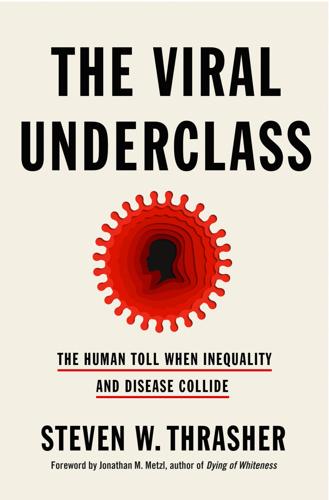
The Viral Underclass: The Human Toll When Inequality and Disease Collide
by
Steven W. Thrasher
Published 1 Aug 2022
Severely Undercounted Virus Deaths in Nursing Homes, Report Says,” New York Times, January 28, 2021, https://www.nytimes.com/2021/01/28/nyregion/nursing-home-deaths-cuomo.html. book on his pandemic response: Jon Campbell, “Andrew Cuomo’s COVID-19 Book Sells 11,800 Copies, Lands on Best Sellers List,” Democrat and Chronicle, October 22, 2020, https://www.democratandchronicle.com/story/news/politics/albany/2020/10/22/andrew-cuomos-book-lands-new-york-times-best-sellers-list/3724407001/. and was awarded an Emmy: Dan Schindel, “Andrew Cuomo Got an Emmy for Literally Just Showing Up,” Hyperallergic, December 8, 2020, https://hyperallergic.com/604761/andrew-cuomo-emmy-award-covid-briefings/. Royal Free Hospital in 1998: Jeremy Laurence, “I Was There When Wakefield Dropped His Bombshell,” Independent, January 29, 2010, https://www.independent.co.uk/life-style/health-and-families/health-news/i-was-there-when-wakefield-dropped-his-bombshell-1882548.html.
…
spell over nursing homes for years: “Residents at Greater Risk During Flu Season,” Illinois Nursing Home Abuse Blog, Levin and Perconti Attorneys at Law, October 30, 2018, https://blog.levinperconti.com/nursing-home-flu-season/. states that did not: Joaquin Sapien and Joe Sexton, “‘Fire Through Dry Grass’: Andrew Cuomo Saw COVID-19’s Threat to Nursing Homes; Then He Risked Adding to It,” ProPublica, June 16, 2020, https://www.propublica.org/article/fire-through-dry-grass-andrew-cuomo-saw-covid-19-threat-to-nursing-homes-then-he-risked-adding-to-it. pandemic in the United States: Avik Roy, “The Most Important Coronavirus Statistic: 42% of US Deaths Are from 0.6% of the Population,” Forbes, May 26, 2020, https://www.forbes.com/sites/theapothecary/2020/05/26/nursing-homes-assisted-living-facilities-0–6-of-the-u-s-population-43-of-u-s-covid-19-deaths/.
…
how many of them perished: Joe Sexton, “Not Mentioned in Cuomo’s Coronavirus Book: How Many Nursing Home Residents Died in New York,” ProPublica, October 23, 2020, https://www.propublica.org/article/not-mentioned-in-cuomos-coronavirus-book-how-many-nursing-home-residents-died-in-new-york. resign or be impeached: Steven W. Thrasher, “Andrew Cuomo Should Resign,” Scientific American, March 4, 2021, https://www.scientificamerican.com/article/andrew-cuomo-should-resign/. reportedly sexually harassed eleven women: Report of Investigation into Allegations of Sexual Harassment by Governor Andrew M. Cuomo, Office of the Attorney General, Letitia James, State of New York, August 3, 2021, https://ag.ny.gov/sites/default/files/2021.08.03_nyag_-_investigative_report.pdf.
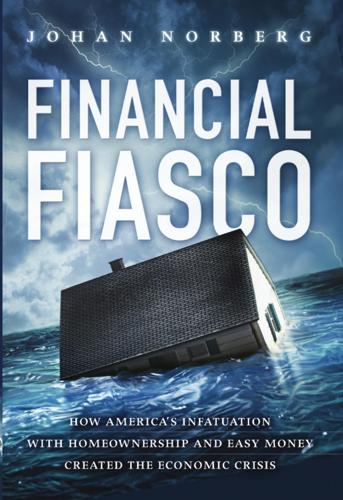
Financial Fiasco: How America's Infatuation With Homeownership and Easy Money Created the Economic Crisis
by
Johan Norberg
Published 14 Sep 2009
Day and Liebowitz, "Mortgage Lending to Minorities." 22. Day, "HUD Says Mortgage Policies Hurt Blacks." 23. National Mortgage News, "Fannie to Boost Subprime Activities." 24. Holmes, "Fannie Mae Eases Credit." 25. Barrett, "Andrew Cuomo and Fannie and Freddie." 26. Stiglitz, Orszag, and Orszag, "Implications of Risk-Based Capital Standard." 27. Duhigg, "Pressured to Take More Risk." 28. Barrett, "Andrew Cuomo and Fannie and Freddie." 29. Leonnig, "How HUD Mortgage Policy Fed the Crisis." 30. Becker, Stolberg, and Labaton,"White House Philosophy Stoked Mortgage Bonfire." 31. Bush, "President Calls for Expanding Opportunities to Home Ownership." 32.
…
He became a member of the board of directors of Fannie's favorite corporation, Countrywide, and at the same time jointly started up a construction and development business with the building company KB Home, whose board he also joined, together with, among others, a former CEO of Fannie Mae. In his new role, Cisneros started constructing buildings in poor areas, guaranteed by-Fannie Mae. It's a small world. Cisneros was replaced as housing secretary by the youngest-ever occupant of that post, Andrew Cuomo, son of former New York governor Mario Cuomo. One of his first duties was to set new targets for Fannie's and Freddie's lending. He prepared those by launching an attack against the duo, accusing them of discrimination on the grounds that not enough of their mortgages went to minorities. Cuomo's closest aide, William Apgar, demanded "flexibility"-code for less strict requirements for creditworthiness and down payments: "We believe that there are a lot of loans to black Americans that are good loans that could be safely purchased by Fannie Mae and Freddie Mac if these companies were more flexible."22 In July 1999, Andrew Cuomo proposed stricter requirements for Fannie and Freddie.
…
Cuomo's closest aide, William Apgar, demanded "flexibility"-code for less strict requirements for creditworthiness and down payments: "We believe that there are a lot of loans to black Americans that are good loans that could be safely purchased by Fannie Mae and Freddie Mac if these companies were more flexible."22 In July 1999, Andrew Cuomo proposed stricter requirements for Fannie and Freddie. The share of mortgages to be granted to those earning less than the median income in their area was raised from 42 to 50 percent, and the share that should go to people on very low incomes increased from 14 to 20 percent. The chairman of Fannie Mae, Franklin D.
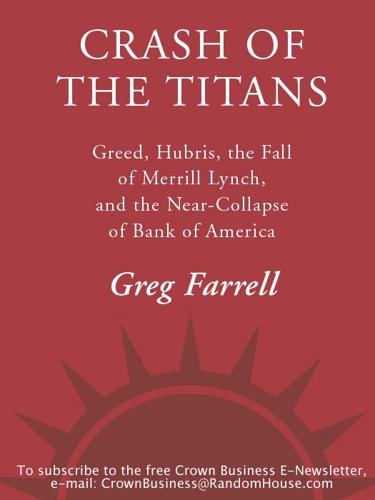
Crash of the Titans: Greed, Hubris, the Fall of Merrill Lynch, and the Near-Collapse of Bank of America
by
Greg Farrell
Published 2 Nov 2010
Bloomberg decided against running for president, and Rattner became a big supporter of Senator Barack Obama. After Obama’s victory, Rattner would become the president’s “car czar” in 2009, responsible for the turnaround of General Motors and Chrysler, which were rescued from bankruptcy with taxpayer funds. Andrew Cuomo, the New York attorney general, would eventually bring charges against Rattner’s firm, Quadrangle, for providing gifts to the New York State Comptroller in return for getting a piece of the state’s lucrative pension investment business. But in July 2008, well before any of this, Fleming called the Manhattan financier from his vacation retreat on the Amalfi coast.
…
In the House of Representatives, congressman Henry Waxman of California had asked representatives of all the banks that received TARP funds to provide details about what kind of bonus payments they had made in the past two years, and whether the access to TARP funds would affect bonuses for 2008. On the state level, New York attorney general Andrew Cuomo had also written to Wall Street’s biggest banks, requesting similar details about plans to pay out bonuses. Once the meeting was scheduled, Thain decided to add an item or two to the agenda, concerning the payment of bonuses at Merrill Lynch. Peter Stingi, the head of HR at Merrill, formally presented a schedule by which the committee would approve bonus payments for top employees on December 8, a full month ahead of the usual timetable.
…
Fleming went upstairs and sent word in to Finnegan and another member of the compensation committee, Virgis Colbert. One at a time, he told them that he had no interest in a cash bonus for the year and that if stock options were available, that would be fine for him. The two men thanked Fleming before returning to their deliberations. THAT MORNING, IN RESPONSE to the bonus story, New York attorney general Andrew Cuomo sent an open letter to the Merrill Lynch board describing Thain’s attempt to secure a bonus as “nothing less than shocking.” Through the first three quarters of 2008, Cuomo noted, Merrill Lynch had lost $11 billion and was saved only by Bank of America’s agreement to buy the franchise. “Clearly, the performance of Merrill’s top executives throughout Merrill’s abysmal year in no way justifies significant bonuses for its top executives, including the CEO,” he wrote.

13 Bankers: The Wall Street Takeover and the Next Financial Meltdown
by
Simon Johnson
and
James Kwak
Published 29 Mar 2010
Quoted in Katz, Our Lot, supra note 62, at 65. 67. Ibid. at 29. 68. Actual homeownership rates are from U.S. Census Bureau, Housing Vacancies and Homeownership, supra note 58, at Table 14. 69. Wayne Barrett, “Andrew Cuomo and Fannie and Freddie: How the Youngest Housing and Urban Development Secretary in History Gave Birth to the Mortgage Crisis,” The Village Voice, August 5, 2008, available at http://www.villagevoice.com/2008–08–05/news/how-andrew-cuomo-gave-birth-to-the-crisis-at-fannie-mae-and-freddie-mac/. 70. Housing prices are from the S&P/Case-Shiller Composite-10 Home Price Index, deflated by the CPI–All Urban Consumers; Bureau of Labor Statistics, Consumer Price Index, available at http://www.bls.gov/cpi/data.htm.
…
Katz, Our Lot, supra note 17, at 71–72; Department of Housing and Urban Development, Blueprint for the American Dream, 2002, available at http://www.hud.gov/news/releasedocs/blueprint.pdf; Wayne Barrett, “Andrew Cuomo and Fannie and Freddie: How the Youngest Housing and Urban Development Secretary in History Gave Birth to the Mortgage Crisis,” The Village Voice, August 5, 2008, available at http://www.villagevoice.com/2008–08–05/news/how-andrew-cuomo-gave-birth-to-the-crisis-at-fannie-mae-and-freddie-mac/. 80. Doris “Tanta” Dungey, “Krugman on the GSEs,” Calculated Risk, July 14, 2008, available at http://www.calculatedriskblog.com/2008/07/krugman-on-gses.html. 81.
…
Note that the relative wage in Figure 4-2, which exceeds 1.7 at its peak, is not corrected for differences in education. The excess relative wage—the difference between average finance wages and what one would predict based on educational differences—reaches a peak of around 40 percentage points in the 2000s. See Figure 11 in ibid. 78. Andrew Cuomo, “No Rhyme or Reason: The ‘Heads I Win, Tails You Lose’ Bank Bonus Culture,” July 2009, available at “Cuomo Report Details Wall St. Bonuses,” DealBook Blog, The New York Times, available at http://dealbook.blogs.nytimes.com/2009/07/30/cuomo-report-blasts-wall-street-bonus-culture/. 79. Claudia Goldin and Lawrence F.

Listen, Liberal: Or, What Ever Happened to the Party of the People?
by
Thomas Frank
Published 15 Mar 2016
In New York State, for example: Governor Andrew Cuomo’s alliance with hedge funds and investment banks is legendary. Financiers support him in his various campaigns; he shows them the love with tax cuts; and they all work harmoniously together on a campaign to reform public education in New York State. The main target of this reform effort, by the way, is that mighty foe, the New York public school teacher, a figure Cuomo has assailed and berated in numerous ways over the years.* Is there anything toward which the stern-faced, discipline-minded Andrew Cuomo feels tenderly? Why, yes, there is: innovation.
…
France has declared certain Uber operations illegal and at one point arrested several Uber executives. In New York, Mayor Bill de Blasio chose to side with taxi drivers, calling for a cap on the number of Uber drivers allowed in the city. But Governor Andrew Cuomo got the last word, forcing de Blasio to back down and saluting Uber as “one of these great inventions, startups, of this new economy … it’s offering a great service for people, and it’s giving people jobs.”25 Had Andrew Cuomo chosen to require Uber to play by the existing rules in New York, he could have done so. Had the Federal Trade Commission wished to rein in exorbitant price increases in certain prescription drugs, they could have done so.

Billionaires' Row: Tycoons, High Rollers, and the Epic Race to Build the World's Most Exclusive Skyscrapers
by
Katherine Clarke
Published 13 Jun 2023
“One57 is the poster child for misplaced public aid,” it said. A second editorial ran in the Daily News less than a month later, calling on a newly formed state anticorruption commission, known as the Moreland Commission, to probe the tax break in light of donations made to New York governor Andrew Cuomo, a popular figure among developers, by Barnett’s Extell just days before the governor signed the bill allowing the developer and four others to make use of the 421-A program. The paper pointed to two $50,000 donations to the governor’s campaign by corporations linked to Extell on the very same day in late January 2013 that Albany passed a housing bill containing the tax breaks, and another $100,000 donation made by Barnett to a state Democratic Party account that Cuomo had used to finance ads pushing his agenda, less than three weeks after the bill was signed into law.
…
Higher income New Yorkers in particular would see their taxes ratchet up significantly. Many in the real estate industry feared that might send them fleeing to lower tax states like Florida and Texas. In a head-scratching moment that seemed to invert the normal political dynamic around taxation, New York’s Democratic governor Andrew Cuomo responded aggressively to the proposal, underlining the repercussions it could have for his state. “New York will be destroyed if the deductibility of state and local taxes is included in any final plan that passes the House,” he tweeted. For Manhattan real estate developers, the SALT proposal added to a growing tide of political sentiment that they feared was chasing away buyers.
…
CHAPTER 24 New York on Pause On March 20, 2020, Kelly Kennedy Mack, the president of new development marketing at Corcoran Sunshine, sat on the edge of the sofa at her family’s home on Long Island, glued to the television. On the screen addressing a bank of cameras was New York governor Andrew Cuomo. He was announcing that he was taking the drastic step to put New York “on pause,” owing to the rapid rise in the city’s coronavirus case count. The new virus had burst into the public’s consciousness just weeks before, but to most it had seemed far off. Now the number of recorded cases was rising quickly across the state—at more than seven thousand, the total was seven times the number recorded in any other U.S. state.
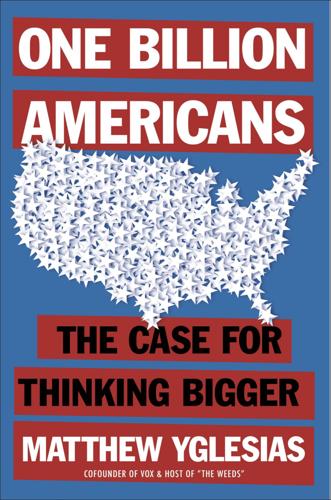
One Billion Americans: The Case for Thinking Bigger
by
Matthew Yglesias
Published 14 Sep 2020
America’s second-densest city, San Francisco, wasn’t even close to being the second-hardest-hit city. Both San Francisco mayor London Breed and California governor Gavin Newsom were quick to issue social distancing orders in mid-March, while New York City mayor Bill de Blasio was slower to take equally robust action and New York governor Andrew Cuomo stepped in as the main leader of the response only once the situation was already out of control. Under the circumstances, the focus on density looks suspiciously like an effort to deflect attention from policy failures rather than a real diagnosis of the situation. That’s especially true because the places generally cited as having the strongest coronavirus responses are generally the developed Asian countries—especially Hong Kong, Singapore, South Korea, and Taiwan—all of which are more than ten times as dense as the United States.
…
But just as cars can be manufactured anywhere in the world as long as they follow Department of Transportation safety rules, a sensible approach would be to establish some clear objective training standards and then allow anyone who can meet them to practice in the United States. Indeed, faced with a critical shortage of medical personnel during the COVID-19 crisis, New York governor Andrew Cuomo temporarily waived the rules restricting foreign doctors—implicitly recognizing that the rules are not really necessary. Immigrant doctors might end up undercutting the salaries of native-born doctors, which would be a boon to the vast majority of Americans. And even if they didn’t, simply increasing the supply of doctors would make getting treatment easier and more convenient for everyone—a clear win.
…
Los Angeles alone has invested billions of dollars in recent years in constructing the Los Angeles Metro Rail system, which has less than a third of the ridership of smaller mass transit systems in much smaller cities like Budapest, Milan, Busan, Montreal, or Stockholm. Concurrently, major political stakeholders in American mass transit are relentlessly focused on the concept of innovation, with New York governor Andrew Cuomo announcing a flashy “genius” contest to improve transit. Elon Musk, when not colonizing Mars or trying to revolutionize the car industry, muses publicly about totally reworking American urban transportation. There’s something natural about this. The United States is bad at mass transit but good at innovation, so the idea that we need to apply some innovation to our transit problem has some appeal.

The Shame Machine: Who Profits in the New Age of Humiliation
by
Cathy O'Neil
Published 15 Mar 2022
She’s done”: @MizFlagPin, Twitter, July 1, 2020, https://twitter.com/MizFlagPin/status/1278178042171572224. GO TO NOTE REFERENCE IN TEXT “bowing to cancel culture”: Ben Mathis-Lilley, “Andrew Cuomo Blames ‘Cancel Culture’ for Dozens of Accounts of Him Being a Lying, Obnoxious Creep,” Slate, March 12, 2021, https://slate.com/news-and-politics/2021/03/andrew-cuomo-wont-resign-blames-cancel-culture-for-reports-hes-a-lying-obnoxious-creep.html. GO TO NOTE REFERENCE IN TEXT “lets white people off the hook”: Christian Cooper, “Opinion: Christian Cooper: Why I Have Chosen Not to Aid the Investigation of Amy Cooper,” The Washington Post, July 14, 2020, https://www.washingtonpost.com/opinions/christian-cooper-why-i-am-declining-to-be-involved-in-amy-coopers-prosecution/2020/07/14/1ba3a920-c5d4-11ea-b037-f9711f89ee46_story.html.
…
But they’re also central to strategy, because the shame weaponized in these online pile-ons can spark angry countermovements. Their excesses, often exaggerated, also provide a handy defense for powerful people under attack, who can then position themselves as victims of a hypersensitive elite. In early 2021, when numerous women accused New York’s Democratic governor, Andrew Cuomo, of sexual harassment, he vowed that he would not resign, as that would be “bowing to cancel culture.” And with that, he managed to avoid scrutiny, at least for some months. When a blistering report by New York’s attorney general, Letitia James, made it clear that the charges were serious, far beyond any fabrications of cancel culture, Cuomo resigned, while still refusing to admit that he’d done wrong.
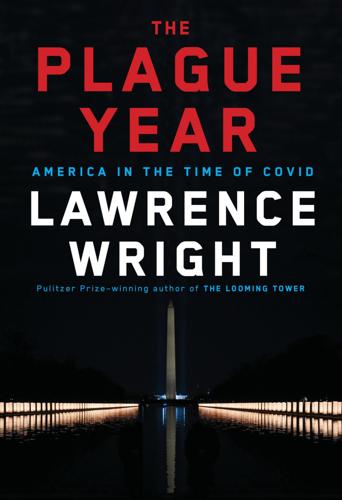
The Plague Year: America in the Time of Covid
by
Lawrence Wright
Published 7 Jun 2021
The next day, he was transferred to NewYork-Presbyterian/Columbia University Medical Center in Manhattan, where he was finally tested for Covid-19. He was positive. By that time, members of his family, nursing staff, healthcare workers and their families were beginning to show symptoms. So was the neighbor who drove him to the emergency room. Governor Andrew Cuomo tagged Garbuz “Patient Zero” in New York, but he was just one case of a cluster of more than ninety people in New Rochelle, where he had recently attended a funeral and a b’nai mitzvah. The synagogue was shut down, and the National Guard enforced a containment zone in a mile radius around it. While Lawrence Garbuz lay unconscious, the coronavirus cast a kind of anesthesia over the entire country.
…
* * * — The Metropolitan Museum of Art closed down, as well as the New York Philharmonic and the Metropolitan Opera. As the audience emerged from a matinee of The Phantom of the Opera, they encountered a notice pasted on the door to the ticket office: “Under the direction of Governor Andrew Cuomo, all Broadway shows in New York City have suspended performances.” The sign promised that shows would resume a month later, but that fantasy wouldn’t last long. Phantom had run for thirty-two years in the Majestic Theatre, the longest run in Broadway history. Directly across 44th Street is the St.
…
The Metro-North Railroad’s New Haven Line, which connects southern Connecticut suburbs to New York’s Grand Central Station, handled nearly forty million passengers a year, but the tracks were shaky and couldn’t support faster trains that might shave thirty minutes off the two-hour commute. That could be economic salvation for the state, in Lamont’s opinion. It wasn’t entirely Connecticut’s decision to make, so in 2019 Lamont called another governor who was lagging in popularity, Andrew Cuomo, and they made a date to meet. They spent an August afternoon on Lake Ontario fishing for steelhead trout. They each caught one, about the same size. “Twins,” Cuomo declared. Lamont paid court to other governors in the region—Phil Murphy, of New Jersey; Charlie Baker, of Massachusetts; and Gina Raimondo, of Rhode Island—so when the president made it clear that the states were on their own, Lamont picked up the phone.
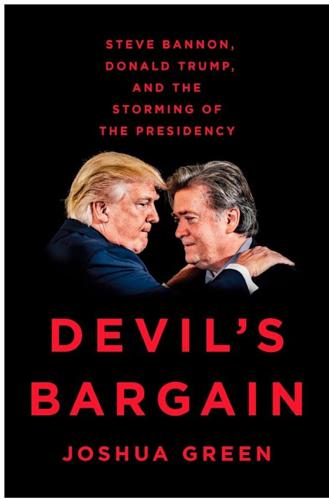
Devil's Bargain: Steve Bannon, Donald Trump, and the Storming of the Presidency
by
Joshua Green
Published 17 Jul 2017
Stone, Nunberg, and Trump’s personal lawyer, Michael Cohen, had hoped he would seek the Republican presidential nomination in 2012. When he passed, the itch to run didn’t subside. In 2013, two Republican state assemblymen from New York, Bill Nojay and David DiPietro, approached Trump to see if he would be interested in challenging New York governor Andrew Cuomo in 2014. Michael Caputo, a Trump adviser who was a former employee of Stone’s and managed Carl Paladino’s 2010 gubernatorial race against Cuomo, also wanted Trump to run and pushed to organize meetings. Although Trump had his eye on the presidency, running for governor offered a host of attractive benefits: it would be easier, it was local, it would entail less travel, and some of that could be done by helicopter.
…
The results were as bad as Stone and Nunberg anticipated—but instead of highlighting the fact that her poll showed Trump losing to Cuomo by 35 points, Conway left out that information and produced an analysis suggesting that Trump could win. “She wrote a sycophantic memo telling Trump he was like the Kennedys,” Nunberg complained. Conway’s memo read: Heading into his re-election year, New York Governor Andrew Cuomo enjoys robust favorability and job approval ratings, but those belie some electoral vulnerability. Likely voters across New York who are upset with high taxes, poor business and economic climate, and the price tag associated with Medicaid expansion/Obamacare are open to real solutions and a job-creating governor with business leadership experience.
…
Most voters agree (70%) and a near-majority “strongly agrees” (49%) that New York needs “a Governor who has created jobs, balanced budgets, and run successful businesses in the private sector.” Likewise, in a half-sample of voters (based off 298 interviews), almost 60% of voters thought it was “very important” that New York elect a Governor who has business leadership experience. Andrew Cuomo is not that Governor, but Donald Trump could be. Having established Cuomo’s supposed vulnerability to Trump, Conway cranked up the flattery: NY loves its celebrity politicians and families: the Kennedys, Moynihans, Buckleys, Clintons, and even the Cuomos. Donald Trump fits that (loose) bill, and he has the money and moxie to compete if he chooses to enter the race.
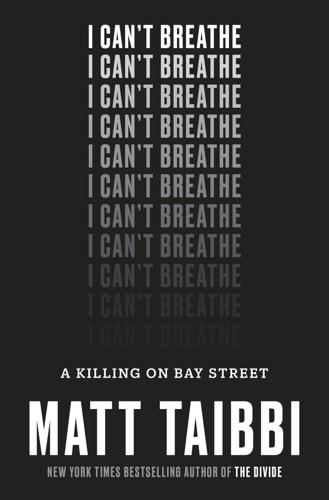
I Can't Breathe
by
Matt Taibbi
Published 23 Oct 2017
The Justice Leaguers were making a film about their involvement in the Garner case. So they rolled cameras as Erica gave a brief speech about the politicians in both parties who by then had walked away from the case. She mentioned Governor Andrew Cuomo and his plan to create an independent prosecutor in police abuse cases, which would be in force for a year before it had to be renewed, by a Republican-dominated Assembly. “I’m calling out Andrew Cuomo,” she said. “He’s throwing us scraps! Because he promised the family he would renew the executive order if the legislature didn’t pass it. Why would corrupt Republicans pass it?” The crowd shrugged.
…
This, he said, was because there was “a perception, a belief, even if wrong, a very deeply held perception and belief by segments of the community, largely African American, that fairness and justice could not be achieved.” That segment of the community, he said, believed that accountability was impossible if Donovan proceeded, because “the police officers involved are members of his prosecutorial family.” Garnett was playing along so far. When Meyerson mentioned that Governor Andrew Cuomo had refused requests to name a special prosecutor in the case, Garnett parried back, asking him if a special prosecutor would have gotten a different result. Meyerson shrugged. He didn’t know. He told the judge that he couldn’t stand there and say that an independent prosecutor would have gotten an indictment.

What Money Can't Buy: The Moral Limits of Markets
by
Michael Sandel
Published 26 Apr 2012
In exchange for queuing up and enduring the wait, they were able to charge their busy clients as much as $125 per ticket for the free performances.9 The theater tried to prevent the paid line standers from plying their trade, claiming “it’s not in the spirit of Shakespeare in the Park.” The mission of the Public Theater, a publicly subsidized, nonprofit enterprise, is to make great theater accessible to a broad audience drawn from all walks of life. Andrew Cuomo, New York’s attorney general at the time, pressured Craigslist to stop running ads for the tickets and line-standing services. “Selling tickets that are meant to be free,” he stated, “deprives New Yorkers of enjoying the benefits that this taxpayer-supported institution provides.”10 Central Park is not the only place where there’s money to be made by those who stand and wait.
…
A1; Michael Cabanatuan, “Bay Area’s First Express Lane to Open on I-680,” San Francisco Chronicle, September 13, 2010. 9. Joe Dziemianowicz, “Shakedown in the Park: Putting a Price on Free Shakespeare Tickets Sparks an Ugly Drama,” Daily News, June 9, 2010, p. 39. 10. Ibid.; Glenn Blain, “Attorney General Andrew Cuomo Cracks Down on Scalping of Shakespeare in the Park Tickets,” Daily News, June 11, 2010; “Still Acting Like Attorney General, Cuomo Goes After Shakespeare Scalpers,” Wall Street Journal, June 11, 2010. 11. Brian Montopoli, “The Queue Crew,” Legal Affairs, January/February 2004; Libby Copeland, “The Line Starts Here,” Washington Post, March 2, 2005; Lisa Lerer, “Waiting for Good Dough,” Politico, July 26, 2007; Tara Palmeri, “Homeless Stand in for Lobbyists on Capitol Hill,” CNN, http://edition.cnn.com/2009/POLITICS/07/13/line.standers. 12.
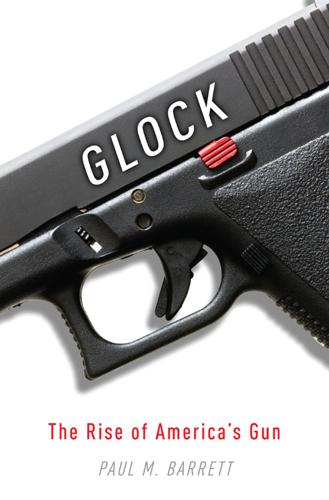
Glock: The Rise of America's Gun
by
Paul M. Barrett
Published 10 Jan 2012
Most other gun makers migrated back to the NRA fold, unwilling to risk the ire of the lobbying group, in no small part because of its ability to influence consumer attitudes toward their products. The Clinton administration tried to salvage the stalling anti-gun litigation by threatening in December 1999 to organize a class-action suit to be brought on behalf of more than three thousand federally subsidized public housing authorities across the country. Andrew Cuomo, Clinton’s secretary of housing and urban development, said he would lead this audacious litigation unless gun makers came to the negotiating table. Cuomo tried to force the manufacturers to talk by simultaneously forming a coalition of local, state, and federal law enforcement agencies that vowed to buy guns only from companies that signed a code of conduct restricting manufacturing and marketing practices.
…
“We need to be part of that family.” The NRA, in turn, heaped honors on Scott, letting it be known that Smith & Wesson was absolved of its sins. Gun shops began selling the company’s products again. The yearlong boycott ended. After the 2000 presidential election finally ended in victory for George W. Bush, Andrew Cuomo left Washington to prepare to run for office in his home state of New York. The new resident of the White House made it clear that the litigation war against the gun industry was over. As governor of Texas, Bush had signed a state statute barring municipal lawsuits against gun companies. In his second term in the White House, he signed a similar law passed by Congress.

The Five-Year Party: How Colleges Have Given Up on Educating Your Child and What You Can Do About It
by
Craig Brandon
Published 17 Aug 2010
“It has been too easy to just throw higher education’s apparent need for more money on the backs of students,” he said, especially when graduates are drowning in debt and unable to get high-paying jobs to pay them off.35 It would be bad enough if these loans had been fair and above-board. They were not. On March 15, 2007, New York Attorney General Andrew Cuomo called a news conference to announce the results of a month-long investigation of the cozy relationship between student loan companies and college administrators. The colleges, he said, were taking kickbacks from the lenders in return for placement on the colleges’ “preferred lender” lists aimed at parents trying to find the best loan deals.
…
If the student had set up his or her own study abroad program, the student could have saved thousands of dollars. When they book these programs through the college, however, it’s the college that gets to keep the difference. Some colleges even tack on an additional study abroad fee to pay for the costs of setting up the programs. In January 2008, New York Attorney General Andrew Cuomo sent subpoenas to fifteen universities seeking data about how they determine the costs of study abroad programs and whether they receive cash bonuses, junkets, or other perks for steering students to particular programs. It turned out, he said, that there was a scam involved that was very similar to the student loan scam.
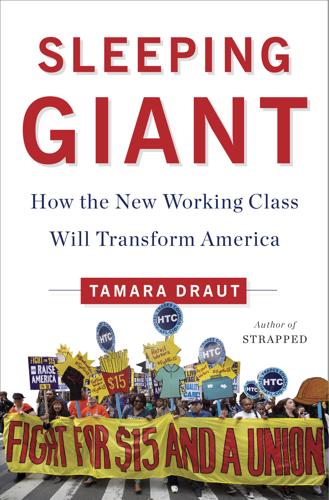
Sleeping Giant: How the New Working Class Will Transform America
by
Tamara Draut
Published 4 Apr 2016
In 2014 and 2015, Walmart, Gap, Target, and McDonald’s all voluntarily announced plans to slowly raise their bottom-rung wage to $9 per hour.17 (McDonald’s limits this modest pay raise only to those stores it directly controls, not to its franchises, where the overwhelming majority of its workers are employed.) While the spokespeople for these companies won’t credit the protesters, the voluntary across-the-board raising of their lowest wage is without precedent. In New York, Governor Andrew Cuomo established a wage board to examine wages in the fast-food industry. In 2015 the wage board voted to approve a $15 minimum wage for fast-food workers at chain restaurants, a policy that will boost the pay of roughly 200,000 workers in the state. In the months following the wage board’s vote, Governor Cuomo proposed raising the minimum wage to $15 for all workers in New York State.
…
Electing good candidates isn’t enough by itself, because, as Cantor told me, “We’ll elect people and the next day the Chamber of Commerce has got their arm around them. ‘Glad you’re here—let’s talk.’ ” As the WFP has gained power, particularly in New York State, it has faced the problems that can come with legitimacy: whether to play ball with power or lose access as an outside actor. That’s exactly the dilemma the WFP faced during Governor Andrew Cuomo’s campaign for reelection in 2014. After four years as governor in New York State, Cuomo had alienated and frustrated nearly every progressive activist in the state. He made promises to enact public financing to address the deeply corrupt politics in Albany but failed to put any muscle behind the effort.

The Rent Is Too Damn High: What to Do About It, and Why It Matters More Than You Think
by
Matthew Yglesias
Published 6 Mar 2012
or visit us online to sign up at eBookNews.SimonandSchuster.com Contents Jimmy McMillan’s Good Idea The Trouble with Rent Control Renting and Buying Investing in a House Location, Location, Location The Land of the Free The Price of Sprawl The New American Geography The Great Backward Migration The New Rentiers The Virtues of Density The Mirage of Gentrification The Politics of Urbanism Reopening the American Frontier About the Author Jimmy McMillan’s Good Idea For a brief, shining moment in October of 2010, the attention of the nation (or at least that portion of the nation that spends an unhealthy amount of time on the Internet) was riveted by the cost of housing in America’s most desirable places. The occasion was the 2010 New York gubernatorial debate. It was a snoozer. Carl Paladino, the Republican nominee, was a bit nutty and was consistently hopelessly far behind Democrat Andrew Cuomo, even in the best year for Republicans in a generation. What’s more, the local cable TV organizers didn’t just put together the customary Democrat-versus-Republican clash. Instead, we got a seven-candidate battle royal featuring contenders from the Freedom Party, the Green Party, the Libertarian Party, the Anti-Prohibition Party, and—best of all—Jimmy McMillan of the Rent Is Too Damn High Party.
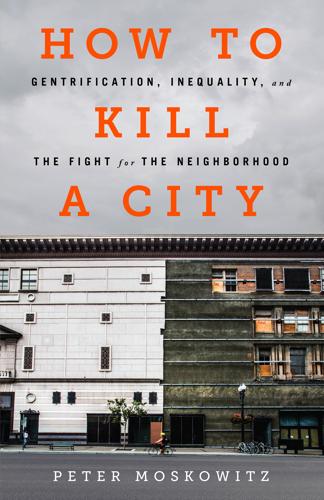
How to Kill a City: The Real Story of Gentrification
by
Peter Moskowitz
Published 7 Mar 2017
Several of my childhood friends once lived in them. They were at one point reserved for middle-income people through a state program called Mitchell-Lama, which gave tax breaks and low-interest loans to landlords willing to rent at below-market rates. Then an investment firm called Island Capital bought the complex, and New York governor Andrew Cuomo—who worked for Island Capital before becoming governor—brokered a deal to take the apartments out of the Mitchell-Lama program and convert them to market rate. Several other Mitchell-Lama buildings are now going through a similar process. There were originally 70,000 rental apartments available through the program; that’s now down to 35,000.
…
the National Association of Realtors is the second-biggest lobbying group: “Top Spenders,” Center for Responsive Politics, 2016. Chapter 10: An Elegy Westbeth, the first federally subsidized artists’ colony: Anemona Hartocollis, “An Enclave of Artists, Reluctant to Leave,” New York Times, November 21, 2011. New York governor Andrew Cuomo… brokered a deal: Charles Bagli, Other People’s Money (New York: Penguin Group, 2013), 141. There were originally 70,000 rental apartments available: Ronda Kaysen, “Divided by a Windfall: Affordable Housing in New York Sparks Debate,” New York Times, November 14, 2014. 57 percent of apartments are vacant: Julie Satow, “Pied-à-Neighborhood: Pieds-à-Terre Owners Dominate Some New York Buildings,” New York Times, October 24, 2014.

If Mayors Ruled the World: Dysfunctional Nations, Rising Cities
by
Benjamin R. Barber
Published 5 Nov 2013
Being mayor is not about being Tory or Socialist, Republican or Democrat, Sunni or Shiite; it is not about being a generic politician who happens to occupy a local urban political office but otherwise acts like any other politician in any other office, local, regional, or national. It is about occupying a special political post that, in Andrew Cuomo’s words, calls for someone uniquely “entrepreneurial, pragmatic, and intelligent.”41 Such characteristics are mandatory if the mayor’s “actions are [to be] tangible . . .” in the eyes of “people [who] have a close connection to the mayor” and who believe “the buck stops with the mayor.”42 In sum, mayors act as they do because they are governing cities rather than provinces, cantons, or national states.
…
In Baltimore, Maryland, with unemployment climbing and revenues down, the city found itself a victim of the manipulation of a key interest rate (the London Interbank Offered Rate) by global banks such as Barclays, over which it could exert no influence—other than through lawsuits that lead to prolonged and costly court battles.32 Syracuse, a typical New York State rustbelt city, recently appealed for a state bailout rather than accept Governor Andrew Cuomo’s proposal to push its pension costs into the future. The governor’s unsentimental response captures the problem cities face: the answer to local fiscal stress cannot be, he said, that “they’re going to come to Albany and ask for a check.” There would be no more bailouts of “aging cities with aging populations and aging infrastructure that are consuming in greater percentages of their revenues . . . with . . . a declining tax base.”33 At least as far as aging cities with aging infrastructure are concerned, “city limits” turns out to have a meaning more encompassing than topology or boundaries.
…
Lowe, “Voters Still Have Confidence in Mayors Running Cities,” http://www.usmayors.org/usmayornewspaper/documents/08_01_11/pg8_voters.asp. 40. Data from Ulrik Kjaer, “The Mayor’s Political Career,” in Henery Back, Hubert Heinelt, and Annick Magnier, eds., The European Mayor: Political Leaders in the Changing Context of Local Democracy, Wiesbaden: Vs Verlag, 2006, p. 90. 41. Andrew Cuomo, as secretary of Housing and Urban Development, in 1997. J. Philip Thompson III, Double Trouble: Black Mayors, Black Communities, and the Call for a Deep Democracy, New York: Oxford University Press, 2006, p. 6. 42. Eugene T. Lowe, “Voters Still Have Confidence in Mayors Running Cities,” http://www.usmayors.org/usmayornewspaper/documents/08_01_11/pg8_voters.asp.

In Covid's Wake: How Our Politics Failed Us
by
Stephen Macedo
and
Frances Lee
Published 10 Mar 2025
Such behavior calls into question w hether the federal system, as in the oft-repeated phrase coined by Justice Brandeis, can, in practice, yield any kind of learning from the “laboratories of democracy,” particularly in today’s polarized era. Chapter 6. Pay Any Price: Ignoring the Costs of Covid Policy One of the signal failures of basic rationality in making and discussing Covid policy was neglecting to weigh the costs of interventions aimed at Covid against the likely benefits. Leaders such as Governor Andrew Cuomo of New York went as far as seeming to boast about considering only one metric: lives saved by interventions. It was well-known from prepandemic plans that the interventions would also cost lives and damage the basic well-being of young p eople and the poor especially. The interventions most benefited t hose who made them: mature and well- off members of the “laptop class.”
…
Meanwhile, some governors mandated that their states stay closed for all or nearly all of the 2020–21 school year, including California’s Gavin Newsom and Hawaii’s David Ige. A few governors permitted some school reopening in fall but then reimposed statewide closure o rders between Thanksgiving 2020 and mid-January 2021, including Kentucky’s Andy Beshear, Michigan’s Gretchen Whitmer, and New York’s Andrew Cuomo. In a few states, governors mandated closure through the first half of the school year and then required schools to reopen midway through the academic year.25 Most governors did not impose statewide reopening mandates until March and April 2021, but many school districts reopened on their own volition in the absence of a statewide mandate.
…
Emotional stress, from being locked in a h ouse? Very bad. Not death. Domestic violence on the increase? Very bad. Not death. —N e w Yor k gov er nor A n dr e w Cuomo, A pr i l 22 , 2 02 0 when asked about protesters who had lost their jobs due to pandemic closures and not yet received unemployment benefits, New York’s governor Andrew Cuomo dismissed them. Minimizing deaths, he contended, took priority over economic hardship, domestic vio lence, emotional stress, and, by extension of the logic, a wide range of other detriments to well-being. Cuomo’s position reflected a stance broadly held during the Covid pandemic, one that guided much political and institutional decision-making.
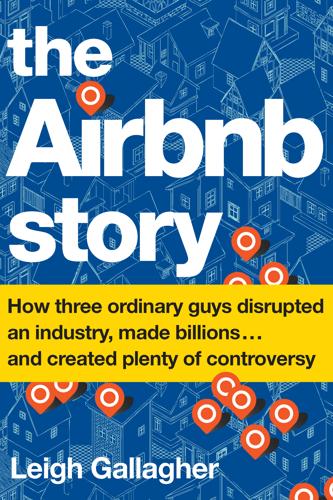
The Airbnb Story: How Three Ordinary Guys Disrupted an Industry, Made Billions...and Created Plenty of Controversy
by
Leigh Gallagher
Published 14 Feb 2017
The 2010 law marked the beginning of a protracted saga that took many twists and turns over the years as the company fought for regulatory clearance—and stirred the ire of lawmakers and the entrenched hotel and real estate industries by continuing to operate anyway. In late 2016, the company suffered a major blow when Governor Andrew Cuomo signed a law that made it illegal for individuals to advertise apartments being rented for fewer than thirty days if the resident was not present—the majority of Airbnb’s business in New York. Airbnb immediately filed lawsuits against the city and the state, which it subsequently settled, but the battle has had a major impact on one of the company’s highest-profile markets.
…
With even the smallest, dingiest studio able to command triple-digit nightly rates and high occupancy levels, landlords, building owners, and some clever entrepreneurs had been turning to websites to more efficiently market their units—whether Craigslist, HomeAway, local operators like IStay New York, or the little-known universe of native-language, country-specific tourism-marketing websites that pipe out New York City lodging deals to the rest of the world. Airbnb was not meant to be the target—in 2010, few lawmakers in the city and state had heard of the quirky start-up from California. So, despite Airbnb’s rallying its community of several hundred New York City hosts to write letters to Governor Andrew Cuomo, the bill passed. As Airbnb gained momentum, though, things started to change. All the conditions that allowed for the company to spread so quickly were particularly ripe in New York: the Great Recession, sky-high rental prices, and large swells of both renters and millennials, the two groups most predisposed to use Airbnb.

Uncontrolled Spread: Why COVID-19 Crushed Us and How We Can Defeat the Next Pandemic
by
Scott Gottlieb
Published 20 Sep 2021
Jill Taylor, the director of the Wadsworth Center, New York State’s main public health lab, said on the call that her lab’s inability to test was “intolerable.” New York State hadn’t diagnosed a single case yet, although we now know the virus was already spreading widely there, especially in New York City.13 It was the same day that New York governor Andrew Cuomo, reacting to mounting concerns about the increasing global spread, set aside $40 million to fight the virus and announced a plan for possible quarantines at homes, hotels, and hospitals.14 The New York public health officials knew they were at the precipice, and they didn’t have a test to see over the cliff.
…
I called on the produce growers association to implement better tracking and tracing of their products, including changes to their packaging that would make it easier for regulators to isolate which growing region and farm was the source of any products that were found to be contaminated.43 Up until that point, the industry was reluctant to implement packaging that could allow produce to be easily traced to a specific farm, which made it harder for the FDA to isolate the source of an outbreak and implement more targeted recalls.44 I believed my messages on Twitter, urging the labeling changes, helped break a deadlock.45 Twitter was a nontraditional communications tool for the FDA. I was the first FDA commissioner to use the platform, the first commissioner even to have an account. On March 13, New York governor Andrew Cuomo spoke to President Trump and Vice President Pence about the state’s ongoing testing needs, “and they finally approved New York’s request made earlier in the week to be able to approve any lab in the state to do COVID testing—a real breakthrough that practically took the FDA out of the lab-approval equation for New York,” Cuomo would write in his autobiographical account of his role in managing his state’s crisis.46 Cuomo said he had also appealed to Pence for help in securing permission from Commissioner Hahn.
…
Coli Scare Likely Came from California: FDA Commissioner,” USA Today, November 23, 2018. 44.Ibid. 45.WholeFoods Magazine Staff, “Lettuce Producers Agree on Transparency,” WholeFoods Magazine, November 26, 2018, https://wholefoodsmagazine.com/news/main-news/lettuce-producers-agree-on-transparency/. 46.Andrew Cuomo, American Crisis (New York: Crown Books, 2020), page 63. 47.New York submitted their EUA request for their Wadsworth Lab test on February 28, and it was authorized on February 29. The FDA had convinced the CDC to give the New York State Department of Health a right of reference to the CDC’s data on the agency’s test design.

Servant Economy: Where America's Elite Is Sending the Middle Class
by
Jeff Faux
Published 16 May 2012
“Calculations based on exit poll and Census data,” notes Edsall, “ suggest that the Democratic Party will become ‘majority minority’ shortly after 2020.”10 But although the Democrats’ demographically defined constituencies may be growing faster than the Republicans’ are, non-Hispanic whites will remain a majority of the population for the next thirty years and a majority of the electorate beyond that. Looking ahead to 2016, there is little reason to think that the potential candidates in the Democratic pipeline represent anything close to transformational leadership the country needs. Hillary Clinton and Rahm Emanuel are loyal products of the current system. As is Andrew Cuomo, who in his first year as governor of New York slashed public spending for the poor and lowered taxes for the rich.11 None of the others in the early betting, such as ex-Virginia governor Mark Warner, Illinois senator Richard Durbin, and several small state governors, have shown a willingness to bite Wall Street or the military-industrial complex from whose financial hands they will have to feed.
…
See social mobility Clay, Henry Clinton, Bill on education financial meltdown of 2008 and fiscal policy 1992 election of Reagan’s influence on Clinton, Hillary Coehlo, Tony Cognizant Technology Solutions Corporation Colbert, Steve collateralized debt obligations (CDO) college education for-profit free trade policy and Obama on servant economy and See also education Colombia, U.S. military spending and Commission on Wartime Contracting Commodities Futures Trading Commission (CFTC) communism China and Marx Soviet Union and in the United States Complex, The (True) Congressional Budget Office (CBO) Congress of Industrial Organizaitons (CIO) consumer debt. See subprime mortgage bubble (2000–2008) Consumer Financial Protection Agency Coolidge, Calvin Cooper, Keysha Cordesman, Anthony H. Coughlin, Father Charles Council of Economic Advisors credit default swaps Crocker, David Cuomo, Andrew Cuomo, Mario currency dollar pound sterling ruble trade deficit and yuan Daley, William Danner, Mark Davis-Bacon Act de Beauvoir, Simone Debs, Eugene Dell Corporation Democratic Party. See government spending; U.S. politics; individual names of Democratic politicians Democrats for Education Reform deposit insurance deregulation Bill Clinton and Carter and financial meltdown of 2008 and Reagan and derivatives Dodd, Christopher Dodd-Frank dollar “domino theory,” dot-com bubble (1990s) Dow Chemical drugs government spending and servant economy and economic austerity trade deficit and Duhigg, Charles Duncan, Arne Economic Policy Institute Economic Report of the President (Obama) economic security austerity austerity and servant economy Carter and Cold War and Great Society and institutionalists and Keynesians vs.

Animal Spirits: How Human Psychology Drives the Economy, and Why It Matters for Global Capitalism
by
George A. Akerlof
and
Robert J. Shiller
Published 1 Jan 2009
He wrote: “Nearly 90 percent of all Americans, according to surveys by HUD, believe that owning a home is better than renting one.”12 Like everyone else, minorities deserved this opportunity for wealth. The allegation of unfairness in opportunities to participate in the boom led to an almost immediate, and uncritical, government reaction. Andrew Cuomo, Secretary of the Department of Housing and Urban Development, responded by aggressively increasing the mandated lending by Fannie and Freddie to underserved communities. He wanted results. The possibility of a future decline in home prices was not his concern. He was a political appointee. His charge was to secure economic justice for minorities, not to opine on the future of home prices.
…
In George Constantinides, Milton Harris, and René Stulz, eds., Handbook of the Economics of Finance. New York: Elsevier Science, pp. 1053–128. Barenstein, Matias Felix. 2002. “Credit Cards and Consumption: An Urge to Splurge?” Unpublished paper, University of California-Berkeley Barrett, Wayne. 2008. “Andrew Cuomo and Fannie and Freddie.” Village Voice, August 5. Barro, Robert J. 1979. “On the Determination of the Public Debt.” Journal of Political Economy 87(5):940–71. Barsky, Robert B., and Eric R. Sims. 2006. “Information Shocks, Animal Spirits, and the Meaning of Innovations in Consumer Confidence.”

The Metropolitan Revolution: How Cities and Metros Are Fixing Our Broken Politics and Fragile Economy
by
Bruce Katz
and
Jennifer Bradley
Published 10 Jun 2013
Building on smart 08-2151-2 ch8.indd 186 5/20/13 6:56 PM METROS AS THE NEW SOVEREIGN 187 investments at the Port of Miami, Governor Rick Scott created a new agency, the Office of Freight Logistics and Passenger Operations, in 2012, to direct and align the state’s strategic infrastructure investments with regional assets and strengths.45 Other governors are also coming to understand that, as New York governor Andrew Cuomo put it in a 2011 speech, “The state can set the stage, but there is no single New York state economy. There’s a Long Island economy, a Western New York economy, a North Country economy. They’re all on the same framework because they’re all within the state’s boundaries, so state policies affect all regions.
…
We write about the Miami Port improvements and Florida’s Office of Freight Logistics and Passenger Operations in our 2013 “Innovations to Watch” report. See Bruce Katz and Owen Washburn, “Innovations to Watch,” Brookings, 2013 (www. brookings.edu/research/interactives/2013/innovationstowatch#Exports). 46. Andrew Cuomo, governor of New York, speech at the Regional Council Awards Event, December 8, 2011 (www.livestream.com/newyorkstateofficeofthegovernor/ video?clipId=flv_27189a8a-6ed8-4762-8f00-62e4ceb844a7). 47. Metros anchor nine of the ten key New York regions: Albany in the Capital Region, Syracuse in Central New York, Rochester in the Finger Lakes, Poughkeepsie in the Mid-Hudson region, Utica in the Mohawk Valley, Binghamton in the Southern Tier, Buffalo in Western New York, and the New York City metro, which is shared by the New York City, Long Island, and the Mid-Hudson regions.
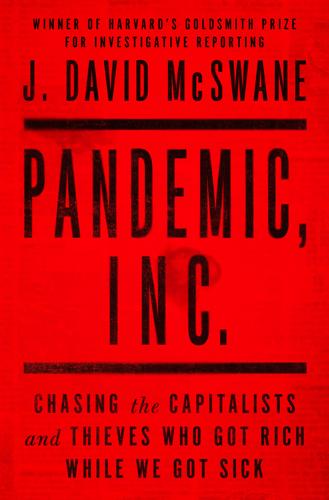
Pandemic, Inc.: Chasing the Capitalists and Thieves Who Got Rich While We Got Sick
by
J. David McSwane
Published 11 Apr 2022
If he pulled it off, it would be a great American story. If he failed, it would be the type of story I tend to write—an investigation. The federal government and Congress had failed to shore up the national stockpile. What supplies were in the stockpile were already depleted. In New York, Governor Andrew Cuomo had decried on television the Wild West market that had emerged in the absence of federal preparation and response. He compared fighting against other states and cities for precious masks and ventilators to entering into a bidding war on eBay. In California, Governor Gavin Newsom circumvented the federal mess and signed a huge contract to buy direct from a Chinese company, a move that would earn him some criticism but maybe wasn’t altogether the worst idea.
…
Still, the lack of a real national strategy led to just the sort of confusion, unnecessary competition, and price gouging that had been predicted. States facing an onslaught of patients, overrun hospitals, and supply shortages began to speak out and dispel the Trump administration’s lie that the nation was ready and well stocked. Leading the frustrated chorus was New York Democratic governor Andrew Cuomo, who had stood up daily televised briefings on the state’s coronavirus response. In just days, New York had become the epicenter of the outbreak, with more than 1,500 people dead. By the morning of March 31, Cuomo sat down at a dais, frustrated, two aides at either side, distanced. Indignant and wringing his hands, Cuomo told reporters and a growing national viewership: “You now literally will have a company call you up and say ‘Well, California just outbid you.’
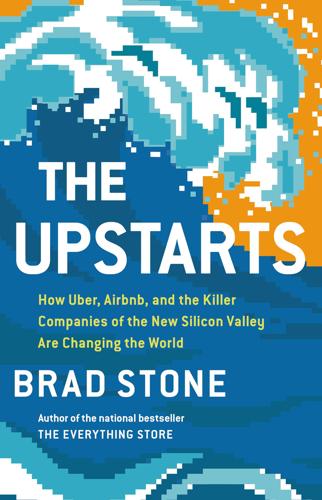
The Upstarts: How Uber, Airbnb, and the Killer Companies of the New Silicon Valley Are Changing the World
by
Brad Stone
Published 30 Jan 2017
Also that month, the New York State legislature passed a bill that would slap fines as high as $7,500 on anyone in New York City caught listing an entire property on Airbnb without a host present for less than thirty days. The company argued that it was an indiscriminate bill that lumped the good Airbnb with people trying to exploit the service. On October 21, New York governor Andrew Cuomo signed it into law, and Airbnb filed another lawsuit in federal court against attorney general Eric Schneiderman, Mayor Bill de Blasio, and the City of New York. If the political tide was turning against Airbnb, Chesky hadn’t seemed worried. “We’re in thirty-four thousand cities, so this experiment is being played out all over the world,” he told me that July.
…
Their most effective argument was that freezing the number of private drivers would only entrench Uber’s advantage. That resonated, says one Lyft exec. “Whoever we were meeting with said, ‘Look, I hate those Uber guys. They are the worst. Help me figure out how to make only Lyft legal.’” The end for de Blasio in the Uber fight was swift and humiliating. A day before the vote, New York governor Andrew Cuomo, who had sparred openly with de Blasio on issues such as charter schools and upper-income tax increases, announced his opposition to the bill and suggested the state might get involved. “I don’t think that government should be in the business of trying to restrict job growth,” the governor said, twisting the knife in his political rival.28 The next day at noon, Allegretti, the Uber public affairs exec, got a phone call.
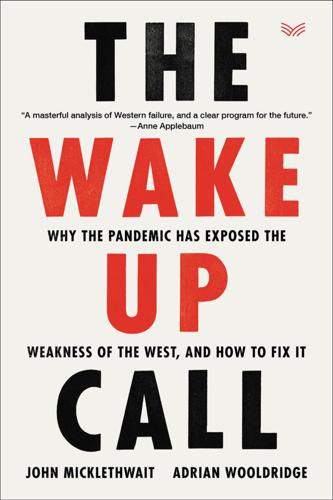
The Wake-Up Call: Why the Pandemic Has Exposed the Weakness of the West, and How to Fix It
by
John Micklethwait
and
Adrian Wooldridge
Published 1 Sep 2020
In Democratic New York, Mayor Bill de Blasio greeted the virus’s arrival by advising people to go and eat in Chinatown. The health commissioner, Oxiris Barbot, told New Yorkers on March 2 “to go about their daily lives, ride the subway, take the bus, go see your neighbors.” 11 Having closed schools on March 15, de Blasio talked about a lockdown; the governor, Andrew Cuomo, retorted that it was his decision—and he had “no interest whatsoever or plan whatsoever to contain New York City.” By the time the stay-at-home order came on March 20, there were four thousand new cases every day in the city.12 Cuomo gradually performed better, but as in Britain, sick elderly patients in New York were sent back to care homes.
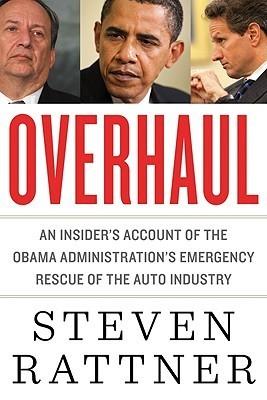
Overhaul: An Insider's Account of the Obama Administration's Emergency Rescue of the Auto Industry
by
Steven Rattner
Published 19 Sep 2010
"He's not accused of doing any wrongdoing," Gibbs replied. "And is not likely to face any criminal or civil charges as it relates to this. And a pending investigation was something that he brought up to us." Even that didn't help. I continued to be deluged with questions. Now that I was in the national spotlight, New York Attorney General Andrew Cuomo and other state officials pressed the inquiry further. My daily chores suddenly included late-night conference calls with lawyers and former Quadrangle colleagues as we attempted to make our case to the authorities and the press. During my many years in business, I had certainly been criticized, but I had never before had my integrity questioned.
…
The headlines that day were full of GM's emergence from bankruptcy, and the front page of the Wall Street Journal acknowledged Team Auto's work: "The quicker-than-expected reorganization could represent a major accomplishment for the Obama administration, which committed $50 billion to GM as part of its bailout of the U.S. auto industry." Meanwhile, since its eruption in mid-April, the pay-to-play controversy in which I was embroiled had shown no signs of going away. Instead it was intensifying, as New York Attorney General Andrew Cuomo decided to dig more deeply and other jurisdictions began their own examinations. At the same time, with the emergence of both companies from bankruptcy, it was time to take our hands off. Almost immediately, my workload dropped precipitously. After feeling as if I had several full-time jobs crammed into one, I found myself with idle hours.

The Great Lakes Water Wars
by
Peter Annin
Published 15 Jun 2018
The result was a multimillion-dollar flooding imbroglio in both places that quickly became political. Even though it’s quite likely that no regulation plan would have been able to adequately handle the record amount of water, anger was immediately targeted at Plan 2014—and the IJC officials behind it—especially in the state of New York. “There’s no doubt,” Governor Andrew Cuomo famously said during a 2017 press conference, “that the IJC blew it. I mean, they blew it!”32 He and other New York residents felt the IJC should have anticipated Lake Ontario’s rise by releasing more water earlier in the year. Lake Ontario experienced record high water during the spring of 2017, rising nearly four feet in less than six months.
…
As a liberal Democrat, it would have been easy for Minnesota governor Mark Dayton to veto a water-diversion application that came from a state led by Scott Walker, a conservative Republican. The Compact was designed to take politics out of Great Lakes water decisions, and since the Waukesha application came from a Republican-controlled state, Governor Dayton’s vote—along with votes from his fellow Democrats, Andrew Cuomo in New York and Tom Wolf in Pennsylvania—showed that a water-diversion decision devoid of politics was possible. In a highly partisan era, officials in the Great Lakes region continued to showcase their ability to cross party lines to reach consensus on highly divisive policy issues. As shattered as some environmentalists were about the outcome, they played an enormously important role in reducing the size of Waukesha’s diversion and in adding a long list of conditions that could end up looming large after the Waukesha diversion goes on line.
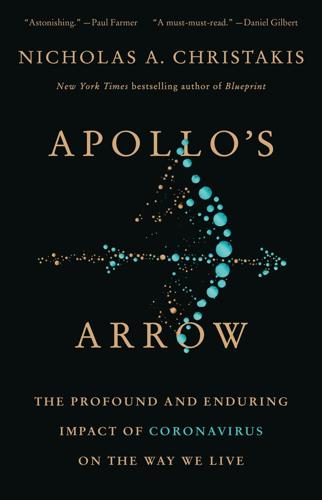
Apollo's Arrow: The Profound and Enduring Impact of Coronavirus on the Way We Live
by
Nicholas A. Christakis
Published 27 Oct 2020
The patient was a thirty-nine-year-old woman, a health-care worker and resident of Manhattan, who had just returned from Iran.87 By that point in time, just thirty-two people had been tested for COVID in the state of New York, but a model based on travel patterns estimated that there may have already been over ten thousand infected people in the state.88 The day after this first known case was announced, the governor of New York, Andrew Cuomo, appeared with the mayor of New York City, Bill de Blasio, to say that contact tracers would look for every person on the woman’s flight. It was later revealed that this did not happen, because it was the CDC’s job to do that, and they did not prioritize it.89 This was an inauspicious opening act for the known part of the outbreak in New York.
…
As Anne Finger explains in her moving autobiographical and cultural history of the polio virus, “the fly became a carrier, not just of contagion, but of displaced emotions.”21 Fear brought on by epidemics can even cause people to shun those trying to help control the disease. On March 30, 2020, emergency physician Richard Levitan reported for duty at New York’s Bellevue Hospital. The New Hampshire resident, like other volunteers from around the country who had answered Governor Andrew Cuomo’s call, had rushed to help relieve the overwhelmed ICU staff in the city’s hospitals. Dr. Levitan had trained at Bellevue himself and was an expert in intubation, the thorny task of placing and managing the endotracheal tube in critically ill patients undergoing mechanical ventilation. “This [pandemic] is the airway challenge of the century,” he said.

Hollow City
by
Rebecca Solnit
and
Susan Schwartzenberg
Published 1 Jan 2001
At the June 2000 United States Con- ference of Mayors, prosperity As the New York Times puts formed places for the that were it, emerged as a widespread urban problem. "The booming urban economies have in a near-triage situation, but have poor and lower middle class to live in the cities." Secretary of Housing and Urban Development urban boom has driven up that "the federal is home made it trans- harder The Times cites Andrew Cuomo: "The prices at twice the rate of inflation" so government would have for the cities that are San Francisco in for- to step up its housing subsidies now pricing out low- and middle- wage job earners."^ only an extreme case. At Yanez's performance, City Lights editor Elaine Katzenberg remarks DELIVERED VACANT 155 that the loss of artists because of the real estate frenzy feels oddly like the of loss artists during the darkest days of AIDS.
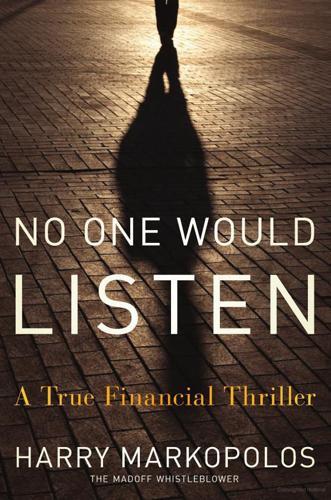
No One Would Listen: A True Financial Thriller
by
Harry Markopolos
Published 1 Mar 2010
Holland III, Managing Director, Goldman Sachs in Boston Debbi Hootman, Darien Capital Management Greg Hryb, CFA, Darien Capital Management Louie Markopolos, Harry’s younger brother Matt Moran, Vice President of Marketing, Chicago Board Options Exchange Peter Scannell, Putnam Investments’ Quincy employee who filed a claim with the Securities and Exchange Commission Rudi Schadt, PhD, Director of Risk Management, Oppenheimer Funds Diane Schulman, False Claims Act fraud investigator Jeb White, President, Taxpayers Against Fraud Burt Winnick, Managing Partner, McCarter & English in Boston Bill Zucker, attorney, McCarter & English Journalists Erin Arvedlund, Barron’s magazine reporter Reuben Heyman-Kantor, 60 Minutes Andy Court, 60 Minutes John “Front Page” Wilke, Wall Street Journal reporter Greg Zuckerman, Wall Street Journal reporter Government Officials Securities and Exchange Commission (SEC) David Becker, General Counsel Steve Cohen, attorney Christopher Cox, former Chairman David Fielder, Assistant Inspector General Noelle Frangipane, Deputy Inspector General Robert Khuzami, current Director of Enforcement David Kotz, Inspector General Lori Richards, former Director, Office of Compliance, Inspections and Examinations Mary Schapiro, current Chairman Jonathan Sokobin, Deputy Chief Economist, Office of Economic Analysis, and Director of Risk Management Heidi Steiber, Senior Counsel Linda Thomsen, former Director of Enforcement Andrew Vollmer, former Acting General Counsel John Walsh, Chief Counsel, Office of Compliance, Inspections and Examinations Chris Wilson, Senior Counsel David Witherspoon, Senior Counsel Boston Regional Office Jim Adelman, former senior enforcement attorney David Bergers, former New England Regional Director of Enforcement, who replaced Grant Ward, current Regional Administrator Michael Garrity, Assistant Regional Director Edward Manion, Senior Staff Accountant Juan Marcelino, former Regional Administrator Joseph Mick, Assistant Regional Director Walter Ricciardi, former Regional Administrator Grant Ward, former New England Regional Director of Enforcement Northeast Regional Office in New York Doria Bachenheimer, Assistant Director of Enforcement Meaghan Cheung, Branch Chief Peter Lamoure Simona Suh, enforcement attorney Senate Jeff Merkley (D-OR) Chuck Schumer (D-NY) House of Representatives Gary Ackerman (D-NY) Shelly Capito (R-WV) Joe Donnelly (D-IN) Barney Frank (D-MA), Chairman of the House Financial Services Committee Scott Garrett (R-NJ), Ranking Member, House Capital Markets Subcommittee Al Green (D-TX) Paul Kanjorski (D-PA), Chairman of the House Capital Markets Subcommittee Carolyn Maloney (D-NY) James Segel, Special Counsel to the House Financial Services Committee Brad Sherman (D-CA) Other Andrew Cuomo, current New York State Attorney General William Galvin, Massachusetts Secretary of the Commonwealth Eliot Spitzer, former New York State Attorney General Kathleen Teahan (D, Plymouth), Markopolos’s former local Massachusetts state representative Introduction On the rainy afternoon of June 17, 2009, David Kotz sat patiently in a small room with a single barred window at the Metropolitan Correction Center, a prison in lower Manhattan, waiting to interview Bernard Madoff, the mastermind behind the greatest financial crime in history.
…
I was just beginning to feel the first tinges of desperation. Only three people have impressed me with their efforts to regulate the worst practices of Wall Street: William Galvin, who was elected Massachusetts secretary of the commonwealth in 1994, which put him in charge of the state Securities Division, and New York State’s attorney generals: Andrew Cuomo and Eliot Spitzer. These are the only people who have brought big cases against the sacred cows of Wall Street. They were doing the job the SEC should have been doing but wasn’t. So in late 2002 when I learned from Chuck Hill, who would succeed me as president of the Boston Security Analysts Society, that Spitzer was going to be speaking at the J.F.K.
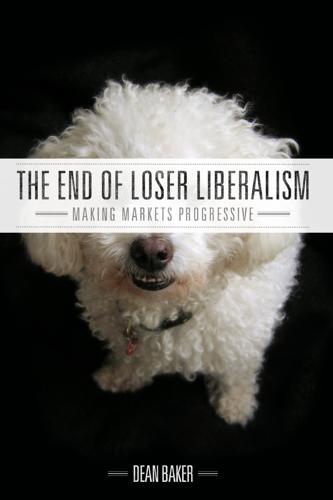
The End of Loser Liberalism: Making Markets Progressive
by
Dean Baker
Published 1 Jan 2011
“A.M.A. and Colleges Assert There Is a Surfeit of Doctors.” New York Times. March 1. Pew Research Center. 2010. “Americans Are of Two Minds on Trade.” Washington, DC: Pew Research Center. http://pewresearch.org/pubs/1795/poll-free-trade-agreements-jobs-wages-economic-growth-china-japan-canada Popper, National. 2010. “Andrew Cuomo, Steve Rattner Settle N.Y. Pension Fund Case.” Los Angeles Times, December 30. Ray, Rebecca and John Schmitt. 2007. “No-Vacation Nation.” Washington, DC: Center for Economic and Policy Research. http://www.cepr.net/documents/publications/2007-05-no-vacation-nation.pdf Ray, Rebecca, Janet C. Gornick, and John Schmitt. 2008.

Last Best Hope: America in Crisis and Renewal
by
George Packer
Published 14 Jun 2021
The president struts his mastery, the government doctors flatter him, and the politicians smile, smug and clueless. Redfield talks about a strategy of “containment,” but it’s too late. The virus was already infiltrating New York City’s apartment buildings and office towers and subways. The next day, Governor Andrew Cuomo declared a state of emergency; within two weeks, New York and California would shut down; by the end of the month, New York City would have its thousandth COVID death. Everyone standing with Trump amid the machines and wires in the white fluorescent light of the lab was complicit in a grand deception.
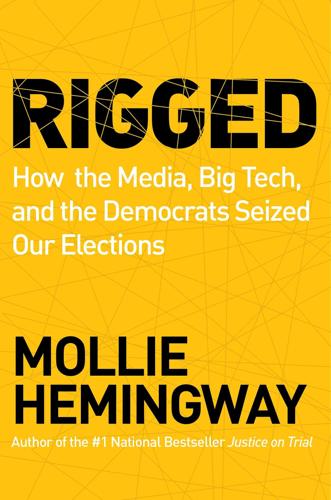
Rigged: How the Media, Big Tech, and the Democrats Seized Our Elections
by
Mollie Hemingway
Published 11 Oct 2021
* * * Throughout the crisis, Trump would face great criticism for saying things that later turned out to be true. The media wanted to humiliate Trump and make him look like a bad leader. And their attempts to make Trump appear as a buffoon led them to elevate an old face to the national stage: New York governor Andrew Cuomo. The media saw Cuomo as a foil against Trump, someone whom they could turn into a hero of the COVID crisis. With Joe Biden out of the picture, they wanted to make Cuomo a yardstick against which voters could assess Trump—and they were desperate to show that Trump didn’t measure up. The Trump–Cuomo showdown would display the true extent of the media’s perfidy.
…
When Trump recommended a course of action, the media would frame it as disastrously misinformed; when Cuomo recommended the same course of action, sometimes just hours later, they would praise his resolute decision-making. The hypocrisy reached unprecedented levels. The first salvoes were fired when Trump told Sean Hannity on air that he doubted New York would actually need 30,000 additional ventilators or 40,000 ventilators total as claimed by New York governor Andrew Cuomo in late March.151 Cuomo, for his part, was upset that the Trump administration had not acquiesced to his request and asked them to “pick the 26,000 people who are going to die.” He said, “[T]he number of ventilators we need is so astronomical.” Cuomo also claimed the state would need 140,000 hospital beds.

Tailspin: The People and Forces Behind America's Fifty-Year Fall--And Those Fighting to Reverse It
by
Steven Brill
Published 28 May 2018
While service in and out of that station was curtailed through the summer of 2017, more New Yorkers suffered through an escalating series of breakdowns on the city’s subway system, which was 112 years old and carrying record numbers of passengers. Maintenance schedules on tracks and subway cars had been cut back so severely years before that New York governor Andrew Cuomo declared that the system was in “a state of emergency.” Every debate in America over government spending in recent years has been fought out in the context of an austerity refrain—that tough choices have to be made because resources are so limited. As we have seen in looking at Pentagon procurement, government spending should, of course, be more efficient; the waste is rampant and inexcusable.
…
It ranked fifteenth: Based on the World Economic Forum’s Global Competitiveness Report: https://www.weforum.org/reports/the-global-competitiveness-report-2017-2018. See also McKinsey’s “Building Global Infrastructure Gaps” report: https://www.mckinsey.com/industries/capital-projects-and-infrastructure/our-insights/Bridging-global-infrastructure-gaps. “a state of emergency”: New York governor Andrew Cuomo signed an executive order, available here: https://www.governor.ny.gov/news/video-photos-rush-transcript-governor-cuomo-announces-1-billion-new-mta-funding-and-declares. “In the fifties and sixties”: Interview with Klein. higher marginal tax rates: Available from the IRS here: https://www.irs.gov/statistics/soi-tax-stats-historical-table-23.
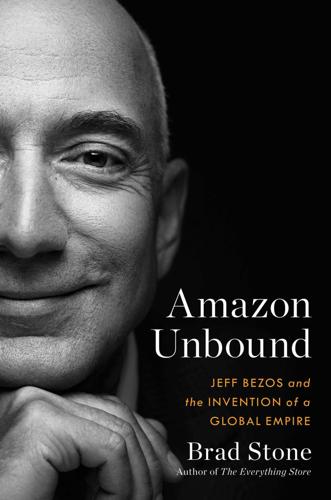
Amazon Unbound: Jeff Bezos and the Invention of a Global Empire
by
Brad Stone
Published 10 May 2021
The HQ2 team predicted that both cities would be politically welcoming—even if Amazon selected Long Island City in Queens, just outside the Manhattan business core, a once gritty industrial community that over the last fifteen years had gentrified at disorienting speed. “We have support from the state and have worked closely with New York State’s economic development director, who is a close confidant of governor [Andrew] Cuomo’s,” the document read. “Mayor [Bill] de Blasio will not be an outspoken champion for the project and is generally critical of big business, but we believe he is supportive of New York City being selected.” * * * As before, the document was only the starting point for an S-team discussion.
…
“disrespectful to the people… anything like this”: Jillian Jorgensen, “De Blasio Fumes at Amazon and Skeptics of Dashed Deal for HQ2 in Long Island City,” New York Daily News, February 15, 2019, https://www.nydailynews.com/news/politics/ny-pol-deblasio-amazon-hq2-20190215-story.html (January 25, 2021). spoke on the phone with Bezos: J. David Goodman, “Andrew Cuomo Speaks with Jeff Bezos, Hints of ‘Other Ways’ to Clear Path for Amazon’s Return,” New York Times, February 28, 2019, https://www.nytimes.com/2019/02/28/nyregion/amazon-hq2-nyc.html (January 25, 2021). tracking his private plane: Jonathan O’Connell and Andrew Ba Tran, “Where Bezos’s Jet Flies Most—and What It Might Say About Amazon’s HQ2 Winner,” Washington Post, November 2, 2018, https://www.washingtonpost.com/business/where-bezoss-jet-flies-most--and-what-it-might-say-about-amazons-hq2/2018/11/02/792be19a-de16-11e8-b3f0-62607289efee_story.html (January 25, 2021).

Don't Burn This Book: Thinking for Yourself in an Age of Unreason
by
Dave Rubin
Published 27 Apr 2020
Unsurprisingly, the hits kept coming from Democrats on Twitter, who now had an incident that could tell a story they so deeply wanted to be true. Bernie Sanders hailed it as proof of the “surging hostility towards minorities around the country.” Nancy Pelosi called it “an affront to our humanity.” And congresswoman Maxine Waters said she was “dedicated to finding the culprits and bringing them to justice.” Meanwhile, Andrew Cuomo, the governor of New York, said: “New York State calls this attack on Jussie Smollett exactly what it is—a hate crime.” ABC’s Robin Roberts then conducted an hour-long interview with Smollett even while the story was falling apart, but she failed to ask a single probing question, taking everything he said as gospel instead.
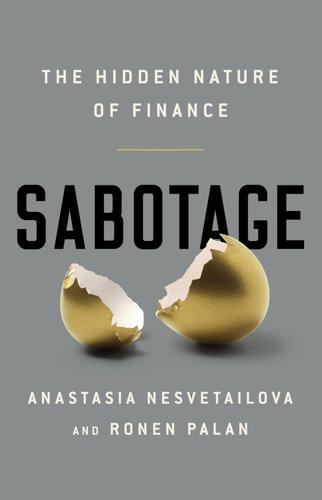
Sabotage: The Financial System's Nasty Business
by
Anastasia Nesvetailova
and
Ronen Palan
Published 28 Jan 2020
Morgan, has been a champion for the cause of bigger banks, applying his considerable political skills on the practical side: he lobbied hard against the introduction of Basel III capital requirements on bigger banks, which he deemed ‘un-American’.23 4. Bankers ensure that profits are flowing to them, but if left unpunished will also ensure that their mistakes are paid for by others. Actually, why confine yourselves to profit flows? What if you can get handsomely paid for losses, too? Let’s consider a very interesting report by Andrew Cuomo, attorney general of New York, published in 2009. The report, subtitled ‘Heads I Win, Tails You Lose Bank Bonus Culture’, provides a detailed analysis of the size of bonuses paid out by big US banks during the 2007–9 meltdown. It notes, for instance, that large payouts became a cultural expectation at banks and a source of competition among the firms.
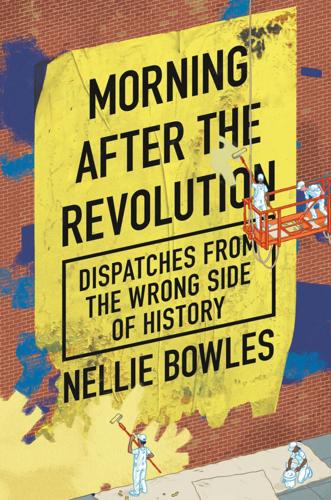
Morning After the Revolution: Dispatches From the Wrong Side of History
by
Nellie Bowles
Published 13 May 2024
One of the witnesses had trouble answering. She was fourteen years old. It was the first penis she’d ever seen. Asexual Awareness Month / The End of Sex Michaela Kennedy-Cuomo is an American princess, or as close to it as our country can make. Her mother is a Kennedy, and Michaela has that family’s beauty. Her father is Andrew Cuomo, the longtime governor of New York, son of the former governor of New York, and she has the Cuomo family’s great sense of stagecraft. So it made international news when Michaela Kennedy-Cuomo stood in front of a rainbow flag and came out as queer during June 2021—Pride Month, of course. “Today, I stand in my queer identity with pride, and in memory of those who came before me.
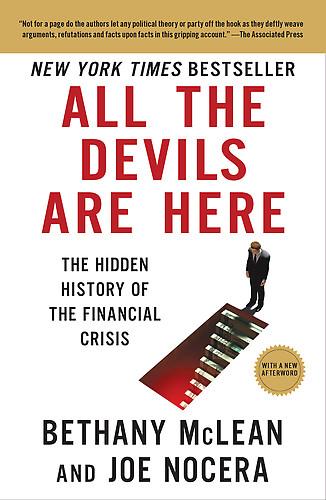
All the Devils Are Here
by
Bethany McLean
Published 19 Oct 2010
Opposed regulation of derivatives. The “Gramm” in Gramm-Leach-Bliley, the law that abolished the Glass-Steagall Act. Jim Leach Chair of the House banking committee from 1995 to 2001. Criticized Fannie and Freddie. The “Leach” in Gramm-Leach-Bliley. Department of Housing and Urban Development Andrew Cuomo HUD secretary from 1997 to 2001. Crossed swords with Jim Johnson. Increased Fannie and Freddie’s affordable housing goals. Armando Falcon Jr. Director of the Office of Federal Housing Enterprise Oversight from 1999 to 2005. Outspoken critic of Fannie and Freddie, the two institutions his office was charged with regulating.
…
Says a former Fannie executive: “About 98 percent of our mortgages were done at market rates. We were giving away a little at the edge of the big machine.” This person adds: “Johnson’s attitude was, ‘I am not going to let the government define what affordable housing is to this company.’” That would soon begin to change, however. In 1999, Andrew Cuomo, who had been appointed HUD secretary during Bill Clinton’s second term and was a true believer in affordable housing, proposed increasing the affordable housing goals. To an unusual degree, Cuomo was immune to Fannie’s charms and impervious to its threats. He’d already taken on Johnson on another issue, and did not back down when Fannie pushed back.
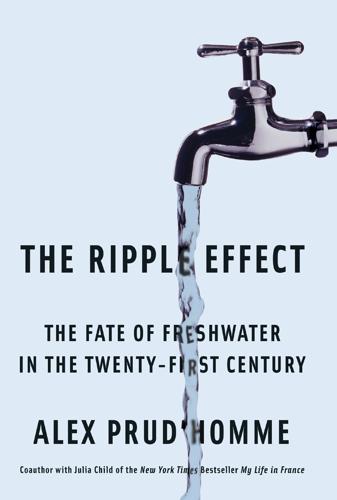
The Ripple Effect: The Fate of Fresh Water in the Twenty-First Century
by
Alex Prud'Homme
Published 6 Jun 2011
Girardi & Keese, the law firm made famous for collaborating with Erin Brockovich to sue PG&E in California, filed a separate case on behalf of five hundred plaintiffs. (These cases were later consolidated.) The oil companies denied the allegations. In 2006, the state’s then attorney general, Eliot Spitzer, announced he would investigate the Newtown Creek oil spill. In 2007, his successor, Andrew Cuomo, sued ExxonMobil to force a cleanup. In 2008 the EPA agreed to test four industrial sites along the creek for toxic chemicals. As in the case of the potentially toxic dust generated at Ground Zero on 9/11, no one really knows how the chemicals polluting Newtown Creek have affected people’s health.
…
There is no conclusive evidence that such chemicals are harmful to humans, and the EPA says that discharge of pharmaceuticals by manufacturing plants into wastewater treatment plants is well controlled. But it also admits that it has no oversight of discharges from individual homes or medical businesses. That’s one reason why a national association of wastewater agencies warns that “pharmaceuticals are a potential sleeping giant.” In January 2010, New York attorney general Andrew Cuomo announced a settlement with five health-care facilities—two hospitals and three nursing homes—in upstate New York that had been flushing painkillers, antibiotics, antidepressants, hormones, and other drugs down toilets and sinks. Drugs disposed of this way usually flow to sewage treatment plants or septic systems.

Class Warfare: Inside the Fight to Fix America's Schools
by
Steven Brill
Published 15 Aug 2011
“We made the attorney general of each state sign an assurance that everything in the application was accurate,” Joanne Weiss told me when I asked about all the boxes that were checked inaccurately to indicate school district and union commitments to implement the plans in the proposals. Actually, the regulations that Weiss and her team drafted required only that the attorneys general certify that any statements made in the application about existing state law were accurate, a point emphasized by a spokesman for then–New York State attorney general Andrew Cuomo when I asked about New York’s inaccurately checked boxes. Weiss also said that no one in her office checked the accuracy of the assurances, as conveyed by the checked boxes, before the awards were announced. One factor the vetters were allowed to consider, which counted for up to 45 of the 500 points, was the extent of “stakeholder” buy-in demonstrated by the states.
…
” * * * 1 In February 2012, following the courts’ rejection of appeals by the United Federation of Teachers in New York City, the ratings were released for the 18,000 city teachers who teach in grades where tests that make up the value-added scores are given. The union’s reaction was so furious that many of its Democratic allies pushed for legislation to keep future scores from being made public. As of May 2012 a compromise of sorts was being discussed by Governor Andrew Cuomo and legislative leaders in Albany, who were under intense pressure from the teachers’ unions. Under the compromise, the scores would be released to parents but not to the public. However, how such a plan would work was unclear: Would parents considering which school to send their children to be allowed to see the scores?

Right of Way: Race, Class, and the Silent Epidemic of Pedestrian Deaths in America
by
Angie Schmitt
Published 26 Aug 2020
Golden and Staten Island Republican Senator Andrew Lanza instead introduced a measure that would have killed the program and replaced the cameras with stop signs.27 That might have been the end of it if not for some creative advocacy by Families for Safe Streets. Just days before the cameras were shut off in June, Amy Tam-Liao, Transportation Alternatives, and Families for Safe Streets held a demonstration in front of Governor Andrew Cuomo’s office in Midtown Manhattan. On Third Street, the group—mainly parents who had lost children to traffic collisions in the city—held a banner saying, “Children are going to die.” Tam-Liao and Paul Steely White, Transportation Alternatives’ director at the time, were arrested for blocking traffic and handcuffed by the New York City Police Department in front of news reporters.28 Amy Tam-Liao and Paul Steely White, former director of Transportation Alternatives, are arrested at a protest for speed cameras in school zones in 2018.

Great American Railroad Journeys
by
Michael Portillo
Published 26 Jan 2017
According to the New York Times: ‘Until the first blow fell, no one was convinced that Penn Station really would be demolished, or that New York would permit this monumental act of vandalism against one of the largest and finest landmarks of its age.’ Madison Square Garden was built in its place. Recently, a further redevelopment has been announced, with New York state governor Andrew Cuomo saying that the present station was dark, constrained, ugly, dated and ‘a lost opportunity’. Despite the demolition, the PRR could not survive, filing for bankruptcy two years after a merger with New York Central. Tenement living in New York was a grim reality for immigrants and, as this 1891 photo reveals, contrasted sharply with the city’s monumental public buildings.
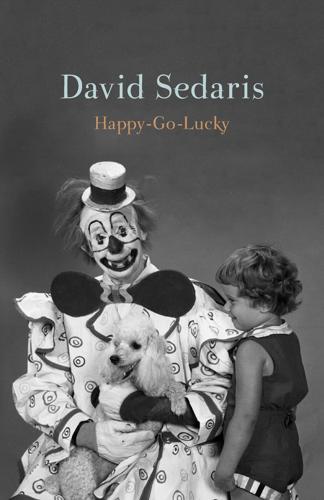
Happy-Go-Lucky
by
David Sedaris
Published 30 May 2022
As a non–blood relative, that seems to be his role during our visits to Springmoor—the servant. “Find us a jazz station,” I tell him. “There we go!” my father says. “That would be fantastic!” Neither Amy nor I care about the news anymore, at least the political news. I am vaguely aware that Andrew Cuomo has fallen out of favor, and that people who aren’t me will be receiving government checks for some reason or other, but that’s about it. When Trump was president I started every morning by reading the New York Times, followed by the Washington Post, and would track both papers’ websites regularly throughout the day.
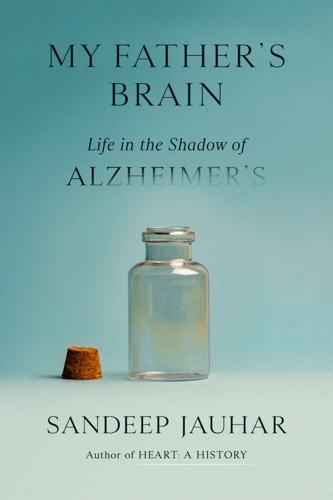
My Father's Brain: Life in the Shadow of Alzheimer's
by
Sandeep Jauhar
Published 11 Apr 2023
www.fsgbooks.com www.twitter.com/fsgbooks • www.facebook.com/fsgbooks * In a two-year study conducted in 2005, cortisol levels in the morning saliva of fifty-seven caregivers were found to be significantly higher than those of the control group. This was linked to chronic stress. † The lack of government support is beginning to change. In 2015, the year after my parents moved to Long Island, Andrew Cuomo, then governor of New York, announced a $67.5 million grant to help ease the burden of the estimated 1 million or so informal caregivers for dementia patients in the state. The money pays for counseling, education, support groups, and a twenty-four-hour hotline. It also subsidizes the hiring of friends and neighbors at $15 an hour so that family members can enjoy occasional respite from the strain of caregiving.
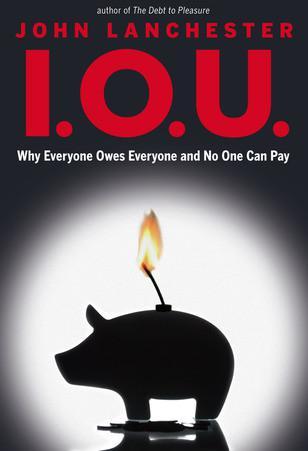
I.O.U.: Why Everyone Owes Everyone and No One Can Pay
by
John Lanchester
Published 14 Dec 2009
The campaign achieved some of its aims when the first President Bush signed off on legislation to force Fannie Mae and Freddie Mac to make sure that 30 percent of their loans went to borrowers with low and moderate incomes. President Clinton’s housing secretaries, first Henry Cisneros and then Andrew Cuomo, set out to execute policies which would extend housing ownership among groups which had historically been excluded from it. There had been a number of changes over the previous decades, which came together to make new forms of lending possible. In 1980, the Depository Institutions Deregulation and Monetary Control Act, or DIDMCA, made it legal to charge higher rates and fees to some borrowers, which was the very definition of a subprime loan.
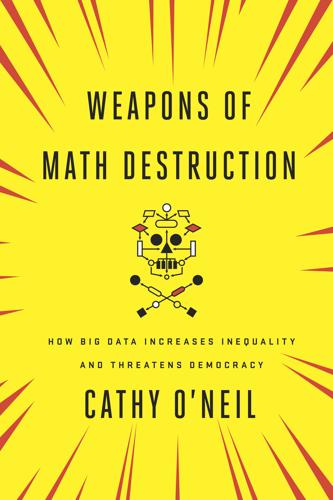
Weapons of Math Destruction: How Big Data Increases Inequality and Threatens Democracy
by
Cathy O'Neil
Published 5 Sep 2016
It also gives them a broader range of criteria to consider, including student and teacher engagement, access to advanced coursework, school climate, and safety. In other words, education officials can attempt to study what’s happening at each individual school—and pay less attention to WMDs like value-added models. Or better yet, jettison them entirely. At around the same time, New York governor Andrew Cuomo’s education task force called for a four-year moratorium on the use of exams to evaluate teachers. This change, while welcome, does not signal a clear rejection of the teacher evaluation WMDs, much less a recognition that they’re unfair. The push, in fact, came from the parents, who complained that the testing regime was wearing out their kids and taking too much time in the school year.

Nickel and Dimed: On (Not) Getting by in America
by
Barbara Ehrenreich
Published 2 Jan 2003
In fact, I'd come across articles bemoaning the absence of a Twin Cities dot-com industry, and these had led me to believe that the region had been spared the wild real estate inflation afflicting, for example, California's Bay Area. But apparently you don't need dot-com wealth to ruin an area for its low-income residents. The Pioneer Press quotes Secretary of HUD Andrew Cuomo ruing the “cruel irony” that prosperity is shrinking the stock of affordable housing nationwide: “The stronger the economy, the stronger the upward pressure on rents.” So I'm a victim not of poverty but of prosperity. The rich and the poor, who are generally thought to live in a state of harmonious interdependence—the one providing cheap labor, the other providing low-wage jobs—can no longer coexist.
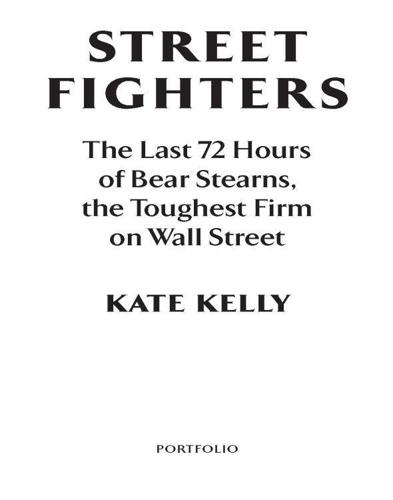
Street Fighters: The Last 72 Hours of Bear Stearns, the Toughest Firm on Wall Street
by
Kate Kelly
Published 14 Apr 2009
Institutional investors excoriated Grasso, who had served the NYSE for nearly forty years, and Attorney General Eliot Spitzer ultimately launched an investigation into whether the pay was improper. In 2004, Spitzer sued Grasso, asserting that the pay was improper for a not-for-profit chief. In July 2008, however, a technical victory allowed Grasso to prevail, enabling him to keep the money he had already received. Spitzer’s successor as attorney general, Andrew Cuomo, declined to pursue the case further. In 2004, Molinaro approached Spector privately. “You could be the CEO when this thing blows up on you,” he told the copresident. “It’s too good. You’ve gotta get rid of it.” Spector refused. Reluctantly, Molinaro took the matter to Cayne. He couldn’t talk sense into Spector, he explained, and something had to be done.

Too Much and Never Enough: How My Family Created the World's Most Dangerous Man
by
Mary L. Trump
Published 13 Jul 2020
“Get even with people who have screwed you,” Donald has said, but often the person he’s getting revenge on is somebody he screwed over first—such as the contractors he’s refused to pay or the niece and nephew he refused to protect. Even when he manages to hit his target, his aim is so bad that he causes collateral damage. Andrew Cuomo, the governor of New York and currently the de facto leader of the country’s COVID-19 response, has committed not only the sin of insufficiently kissing Donald’s ass but the ultimate sin of showing Donald up by being better and more competent, a real leader who is respected and effective and admired.

Tomorrow's Capitalist: My Search for the Soul of Business
by
Alan Murray
Published 15 Dec 2022
The “global society,” long heralded as a supreme advance of the modern era, aided the spread of the disease. In the coming weeks travel bans were announced, and when the spread continued, lockdowns began. California was the first with a statewide stay-at-home order. On the East Coast, New York state became the epicenter of the coronavirus, with Governor Andrew Cuomo ordering all nonessential businesses closed. The blow to the economy was immense. Without customers, the airline industry was effectively shuttered. Restaurants closed. Theaters shut down and Broadway went dark. Businesses sent workers home. Schools closed. The streets of Manhattan, the global heartbeat of finance, were empty.
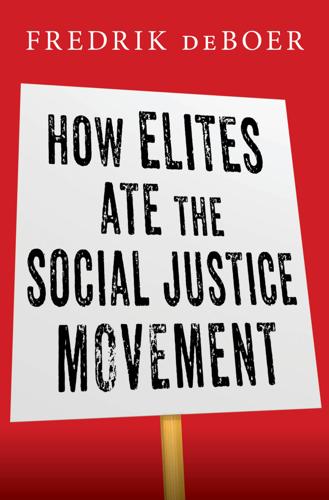
How Elites Ate the Social Justice Movement
by
Fredrik Deboer
Published 4 Sep 2023
Since that original rush of success, Time’s Up has come undone, and in a cruelly ironic way. An October 2022 report in the Hollywood Reporter detailed Time’s Up’s “implosion,” describing it as “a leaderless ghost organization.” The article described rampant infighting and considerable turmoil over a variety of issues, but nothing damaged Time’s Up more than the Andrew Cuomo affair. Cuomo, who ruled with unusual power as the governor of New York and was at one point seen as perhaps the future of the Democratic Party, was accused by multiple women who worked alongside him of sexual misconduct, including verbal innuendos and inappropriate touching. Cuomo repeatedly denied wrongdoing and for months resisted calls for his resignation, but over time his position became untenable.

Facebook: The Inside Story
by
Steven Levy
Published 25 Feb 2020
“It would often take a blowup to actually kind of get the company to refocus,” he says. The blow came quickly. In mid-2007 a group of state attorneys general had become concerned about child predation and pornography on MySpace and won a settlement from that company. Suddenly, the safety of social networks became a burning concern, and the crusading AGs included Andrew Cuomo of New York (later to become governor), Richard Blumenthal of Connecticut (later to become senator), and Roy Cooper of North Carolina (later to become governor). After MySpace, their attention shifted to Facebook. That July, The New York Times reported that “a concerned parent” had created a fake profile of a fifteen-year-old girl, ostensibly to see how dangerous Facebook was.
…
He hired a couple of consultants to help promote Facebook’s case, one a former Indiana AG and another who had recently been on the Federal Trade Commission. They set up a meeting with Cooper and Blumenthal. It didn’t go well, as the AGs presented Facebook with volumes of pornography they had found on the site. Then came the results of a sting operation run by Andrew Cuomo. The New York AG’s team planted fake accounts that purported to be underage teenagers. It didn’t take long for predators to begin grooming these fictional innocents. Blumenthal was particularly unhappy with Facebook. His own children used it. He blamed Open Registration. “I have observed [Facebook’s] mutation into a somewhat different kind of site,” he told The New York Times.

Suburban Nation
by
Andres Duany
,
Elizabeth Plater-Zyberk
and
Jeff Speck
Published 14 Sep 2010
—Megan Harlan, Entertainment Weekly “This book packs a powerful punch: The city of the future turns out to be the old neighborhood. Sprawl, the dominant pattern of the past, doesn’t have to be the wave of the future. Whether or not you subscribe to all of its arguments, Suburban Nation draws attention to the need to radically rethink the way our cities grow—both in our inner cities and on the urban edge.” —Andrew Cuomo “A book of luminous intelligence and wit. The fiasco of suburbia has never been so clearly described. This is not just a manifesto on architecture and civic design but a major literary event.” —James Howard Kunstler, author of The Geography of Nowhere and Home from Nowhere APPENDIX A THE TRADITIONAL NEIGHBORHOOD DEVELOPMENT CHECKLIST This book describes the qualities that distinguish Traditional Neighborhood Development from suburban sprawl.

The Alpha Masters: Unlocking the Genius of the World's Top Hedge Funds
by
Maneet Ahuja
,
Myron Scholes
and
Mohamed El-Erian
Published 29 May 2012
Young, politically minded hedge fund managers who had supported Obama’s campaign were beginning to move away from the president based on policies intent on what Loeb characterized as “redistribution rather than growth.” Confoundingly, one of the first things Loeb did after switching his support to Republican candidates was to enthusiastically work with New York’s Democratic Governor Andrew Cuomo to push for the legalization of gay marriage in New York State. Loeb is confident in his convictions, intellectually honest, eager to take on the system, content to cut his losses, and always unpredictable—in short, a perfect blueprint for a high-returning hedge fund manager. The Young Whippersnapper Finds His Way Loeb grew up in Santa Monica, California, one of three children of his father, an attorney, and his mother, an historian.

Great American Hypocrites: Toppling the Big Myths of Republican Politics
by
Glenn Greenwald
Published 14 Apr 2008
And that clan continuously uses its political power to propagate itself, exploiting its vast power network to strengthen the careers and wealth of its family members while continuously breeding new heirs to the throne. It is true that neoconservatives and Republicans do not have a monopoly on the political exploitation of family connections. The Kennedys still pervade the political system at all elected levels, and the political careers of Jesse Jackson Jr., Andrew Cuomo, Bill Daley, Senator Bill Casey, Al Gore, and Harold Ford Jr.—to name just a few—clearly benefited from the political accomplishments of their fathers. And Hillary Clinton’s status as a leading presidential candidate was derivative, first and foremost, of the fact that she is married to a former president.
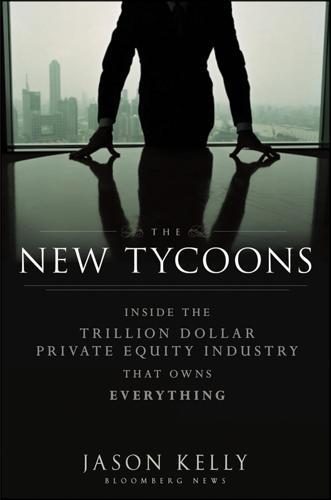
The New Tycoons: Inside the Trillion Dollar Private Equity Industry That Owns Everything
by
Jason Kelly
Published 10 Sep 2012
Schwarzman has directed a surprising amount of his philanthropy toward Catholic charities in New York, so here was a Jewish guy from Philadelphia giving a speech whose past orators have included almost every major party’s Presidential candidate, plus Bob Hope and Beverly Sills. In an additional twist, the standing venue for the dinner, the Waldorf-Astoria, is a Blackstone property. Surely, this was the first time the owner of the hotel was the headliner. Mayor Michael Bloomberg, New York Governor Andrew Cuomo, Bank of America CEO Brian Moynihan, JPMorgan’s Jimmy Lee, and two dozen other religious, financial, and political luminaries sat alongside Schwarzman and his wife Christine, who is Catholic. The whole event had a throwback feel, from the multi-tiered dais on the stage to the dress code (the important men wore tails, while the rank-and-file guests were in black tie) to the opulent room, with its balconies overlooking the ballroom.
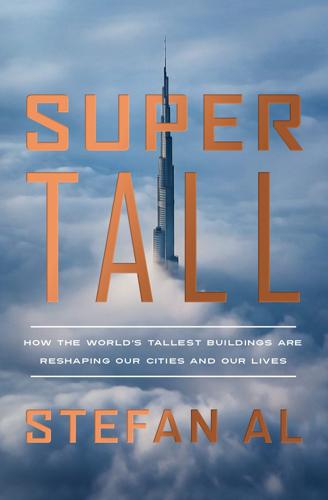
Supertall: How the World's Tallest Buildings Are Reshaping Our Cities and Our Lives
by
Stefan Al
Published 11 Apr 2022
With people fearing public transit and social proximities, many urbanites fled to the suburbs and opted for a car-centric lifestyle. Even drive-in movie theaters had a comeback. Could this mean the end of the New York City skyscraper? “NYC must develop an immediate plan to reduce density,”45 tweeted New York governor Andrew Cuomo, on the cusp of the crisis. This is tragic, since cities like New York are also our greatest achievements, the root of civilization. Lewis Mumford, the noted writer on cities, described cities as “containers” that help speed up civilization. “As with a gas, the very pressure of the molecules within that limited space produced more social collisions and interactions within a generation than would have occurred in many centuries if still isolated in their native habitats, without boundaries,” he wrote.46 From their very beginnings, cities accelerated innovation and social experiments.

The Sharing Economy: The End of Employment and the Rise of Crowd-Based Capitalism
by
Arun Sundararajan
Published 12 May 2016
The article also exposed the fact that the salons, while apparently subject to regulations, were not in fact being regulated at all. None of the workers interviewed had ever seen an inspector in their workplace, and most of the workers were entirely unaware of their rights and of the industry’s apparent safety standards.Within days of the publication of the New York Times article, New York’s governor, Andrew Cuomo, had announced that he would use “emergency rule changes” in order to give regulators greater authority to punish nail salons that mistreat workers while also making it easier for employees to gain licenses to legally work in the profession.Why did the governor suddenly wake up to this regulation crisis?
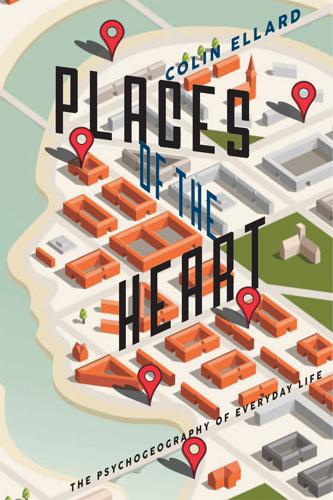
Places of the Heart: The Psychogeography of Everyday Life
by
Colin Ellard
Published 14 May 2015
No part of this publication may be reproduced or transmitted in any form or by any means, electronic or mechanical, including photocopy, recording, or any information storage and retrieval system now known or to be invented, without permission in writing from the publisher, except by a reviewer who wishes to quote brief passages in connection with a print, online, or broadcast review. Bellevue Literary Press would like to thank all its generous donors—individuals and foundations—for their support. The New York State Council on the Arts with the support of Governor Andrew Cuomo and the New York State Legislature This project is supported in part by an award from the National Endowment for the Arts. Book design and composition by Mulberry Tree Press, Inc. First Edition 1 3 5 7 9 8 6 4 2 ebook ISBN: 978-1-942658-01-6 For Kristine Contents Introduction 1.The Nature in Space 2.Places of Affection 3.Places of Lust 4.Boring Places 5.Places of Anxiety 6.Places of Awe 7.Space and Technology: The World in the Machine 8.Space and Technology: The Machine in the World Conclusions: Coming Home Again Notes Index Acknowledgments PLACES OF THE HEART The Psychogeography of Everyday Life Introduction WHEN I WAS SIX YEARS OLD and before I had even thought once about how I wanted to spend my life, my father took me to visit Stonehenge.
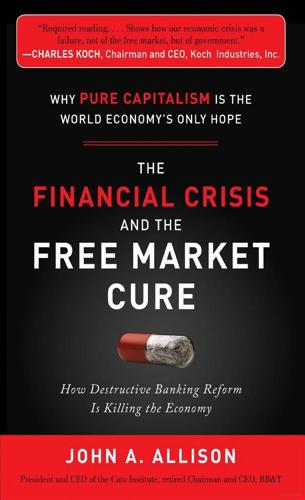
The Financial Crisis and the Free Market Cure: Why Pure Capitalism Is the World Economy's Only Hope
by
John A. Allison
Published 20 Sep 2012
This is an economic fact of life. Encouraging individuals through government subsidies and legal incentives (force) to overspend (that is, buy houses they cannot afford) is certain to lower their and society’s standard of living. Politically correct “do-gooders” cannot wish away the laws of economics. In 1993, under Andrew Cuomo (currently governor of New York), the Department of Housing and Urban Development (HUD) announced that it would “encourage” Freddie Mac and Fannie Mae to have half their loan portfolios in affordable-housing (subprime) loans. Freddie and Fannie did not take the announcement very seriously at the time.

Griftopia: Bubble Machines, Vampire Squids, and the Long Con That Is Breaking America
by
Matt Taibbi
Published 15 Feb 2010
A month or so later, Bank of America shareholders learned for the first time about the billions in losses and about the millions in last-minute bonuses paid out by Thain after shareholders voted—in one case, Thain paid former Goldman executive Peter Kraus a $25 million bonus on Merrill’s last days even though Kraus had only been at Merrill for a few months. Lewis had since been placed under investigation, with New York attorney general Andrew Cuomo alleging that Lewis withheld information about the Merrill losses from shareholders at the direction of Paulson and Fed chief Ben Bernanke. “I was instructed that ‘we do not want a public disclosure,’ ” Lewis said. There were other stories. The seemingly fortuitous late September 2008 coincidence of Warren Buffett deciding to pledge $5 billion to a then-foundering Goldman Sachs during the same week that the bank was miraculously rescued from possible bankruptcy by Geithner’s decision to allow it to convert overnight to bank holding company status—a decision that allowed Goldman to borrow mountains of free cash from the Fed.

The Impulse Society: America in the Age of Instant Gratification
by
Paul Roberts
Published 1 Sep 2014
Since the Citizens United ruling in 2010, hundreds of millions of dollars in contributions from so-called super-PACs have all but completed the financialization of politics: no longer does our political system merely mirror the market; now it has merged with the market. Traditionally, this is an issue that liberals have owned. And, indeed, liberal Democrats such as Elizabeth Warren and New York governor Andrew Cuomo clearly see the issue’s potential to become, as Capital New York magazine put it, “a big-ticket item with national implications—as big, if not bigger, than [sic] gay marriage and gun control.”21 And yet, there is no reason that campaign finance reform couldn’t become a rallying issue for conservatives as well.

Please Don't Sit on My Bed in Your Outside Clothes: Essays
by
Phoebe Robinson
Published 14 Oct 2021
Despite my fear of the ’rona, as evidenced by my boyfriend and me and our early quarantine—we started on March 6, 2020—we believed it would be only a temporary inconvenience. But as the days went on, the death toll increased, and the place I’ve called home for over half my life, New York City, became a coronavirus hot zone, I was no longer distracted by the hilarity of the now-disgraced Governor of New York Andrew Cuomo’s no-nonsense daily press conferences and I quickly sobered up to reality. Bae and I were going to quarantine in an apartment, possibly for months, with no end date in sight. Just the two of us. No change of locaysh. Just inside. With recycled air. No trees. With that realization I was sad, although I couldn’t even name a brand of New York trees.
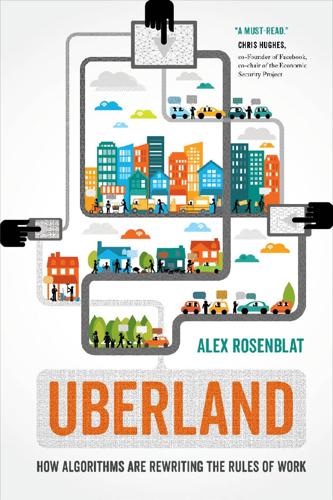
Uberland: How Algorithms Are Rewriting the Rules of Work
by
Alex Rosenblat
Published 22 Oct 2018
For instance, Uber may never create jobs in a high-unemployment neighborhood near its driverless car track in Pittsburgh, even though it promised to do so when it began operations there. Other regions, like New York State, may continue to welcome the company’s expansion as a sign of certain progression in the digital economy. Despite Uber’s mixed track record as a sometimes friend, sometimes foe, Governor Andrew Cuomo signed a bill to legalize ridehailing in the state on June 5, 2017. Uber was beaten over the head with a bat in the press for months before the bill’s passage, for its scandalous behavior at corporate headquarters, in cities, and in various countries, and for its treatment of drivers and sometimes passengers.

The Water Will Come: Rising Seas, Sinking Cities, and the Remaking of the Civilized World
by
Jeff Goodell
Published 23 Oct 2017
Shaun Donovan, who was head of HUD at the time, is a native New Yorker and is widely praised for his response to Sandy. But rebuilding from Sandy is not the same as rebuilding for the city’s long-term future. And in that, the city has had very little help from Washington, much less from the state capitol in Albany. New York governor Andrew Cuomo has put some muscle into greening the state’s energy grid, but the reconstruction of New York City didn’t earn much of his attention (within City Hall, many believed it was personal—Cuomo, who thinks of himself as the big dog in New York State Democratic politics, didn’t want to do anything to make his archrival de Blasio look good).

No Shortcuts: Organizing for Power in the New Gilded Age
by
Jane F. McAlevey
Published 14 Apr 2016
Rikers officials were also required to get signed consent forms from a detainee before any such “interview” could occur. By February 2010, thirteen more groups had signed on to the campaign.20 MRNY then successfully drove what had become a large coalition effort, and eventually persuaded newly elected Governor Andrew Cuomo to announce, in June 2011, that Secure Communities would no longer be implemented in New York State.21 Six months later, on November 22, 2011, in a move that gave new meaning to Thanksgiving for many New York City immigrants, Mayor Bloomberg signed City Council Bill 656, which prohibits the Department of Corrections from using city funds to detain immigrants, effectively ending the city’s collaboration with ICE.

Climate Change
by
Joseph Romm
Published 3 Dec 2015
The wildfire season is already more than 2 months longer than it was just a few decades ago, and wildfires are much larger and more destructive. Warming also puts more water vapor in the atmosphere, so that wet areas of the world become wetter and deluges become more intense and more frequent. This effect has already been documented and linked to human activity in the northern hemisphere. As New York Governor Andrew Cuomo said after Superstorm Sandy slammed his state just 2 years after it was deluged by hurricane Irene, “We have a one-hundred year flood every two years now.” Note that this means that when it is cold enough to snow, snowstorms will be fueled by more water vapor and thus be more intense themselves.
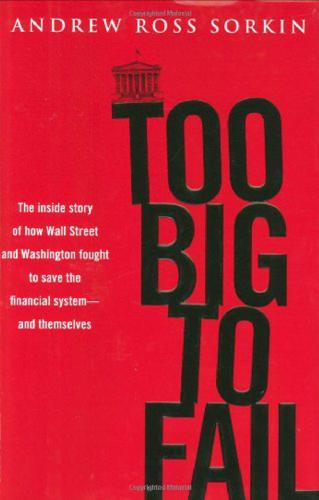
Too big to fail: the inside story of how Wall Street and Washington fought to save the financial system from crisis--and themselves
by
Andrew Ross Sorkin
Published 15 Oct 2009
While Blankfein kept a television in his office, he was so disgusted with what he called Charlie Gasparino’s “rumormongering” that he turned it off in protest. “That’s not my thing,” he told Mack. “I don’t do TV.” As Goldman wasn’t in total crisis mode, Blankfein explained, he was disinclined to join Mack in a war on the shorts until he absolutely needed to. Making little progress, Nides had another, perhaps shrewder, angle to play. He could call Andrew Cuomo, the New York State attorney general, who badly needed a cause to resurrect his political fortunes. Nides had a hunch that he might be willing to put a scare into the shorts. It was an easy populist message to get behind: Rich hedge fund managers were betting against teetering banks amid a financial crisis.
…
Greg Farrell, Aline van Duyn, and Nicole Bullock, “S&P in Warning after AIG Shares Plunge,” Financial Times, September 12, 2008. The cost to insure the debt of AIG: Lilla Zuill, “AIG Woes Knock Its Market Value Below Peers,” Reuters, September 11, 2008. Hank Greenberg, who was being deposed that day: In the midst of settling a Delaware shareholder suit for $115 million, Greenberg began his deposition with Andrew Cuomo for a civil fraud lawsuit, which would stretch over the next several days. Amir Efrati, “Greenberg Settles AIG Shareholder Case,” Wall Street Journal, September 12, 2008. “What the hell are you people waiting for?”: James Bandler, “Hank’s Last Stand,” Fortune, October 7, 2008. If the agency cut AIG’s credit rating: Mary Williams Walsh and Jonathan D.

Against Everything: Essays
by
Mark Greif
Published 5 Sep 2016
*2 This was during the period when AIG was under fire for $168 million in “retention bonuses,” paid by the newly bailed-out company, to executives of its Financial Products division, the division that caused the disaster. The press broke the story of this use of taxpayer funds in March 2009, without identification of names, leading to congressional interest and an unusually high level of public complaint against the financiers. New York State attorney general Andrew Cuomo subpoenaed lists of the bonus recipients and threatened to make their names public. AIG top executives Edward Liddy (since retired) and Gerry Pasciucco announced that naming names would endanger the executives’ families (hence the show of bodyguards) and, anyway, the recipients promised voluntarily to give the bonuses back; thus, AIG didn’t need legal intervention into its salary contracts, or the replacement of the employees in question.
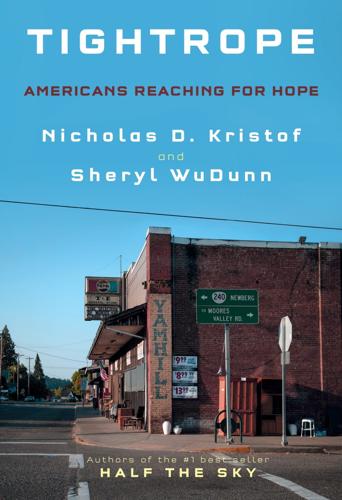
Tightrope: Americans Reaching for Hope
by
Nicholas D. Kristof
and
Sheryl Wudunn
Published 14 Jan 2020
California’s best public elementary schools are in Palo Alto, accessible to anyone who can buy a house in a district where the median home price exceeds $3 million. Next door in East Palo Alto, which is disproportionately poor and minority, children attend inferior schools that lead to an inferior future. In New York State, Governor Andrew Cuomo told us, per-pupil spending at public schools ranges from $11,000 to $33,000, with affluent suburban kids getting the higher sums. “We have to close that disparity,” he told us, but he acknowledged that it’s a third rail of politics to touch the issue. Liberal hypocrisy is at work here as well.
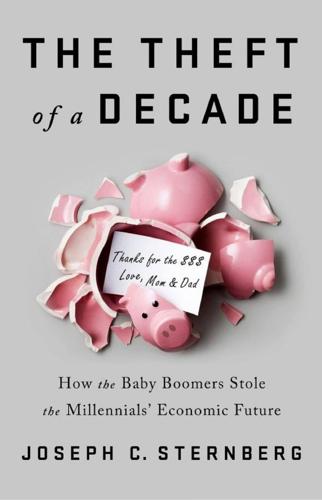
The Theft of a Decade: How the Baby Boomers Stole the Millennials' Economic Future
by
Joseph C. Sternberg
Published 13 May 2019
Now 30 percent of their mortgage purchases would need to be loans that lenders had extended to low- or middle-income borrowers. That was roughly the proportion of these less secure mortgages that the agencies had bought before anyway. But the law allowed the Department of Housing and Urban Development (HUD) to increase that target, and successive HUD secretaries under Clinton—Henry G. Cisneros and Andrew Cuomo, Boomers both—would raise the quotas aggressively, to 50 percent by 2001. The Clinton administration also steadily increased the proportion of those loans that had to go to the riskiest borrowers, those with the lowest incomes. And Fannie and Freddie generally exceeded their quotas.30 To meet those quotas, Fannie and Freddie—and the lenders writing the mortgages that would be sold to the pair—had to dramatically loosen lending standards.
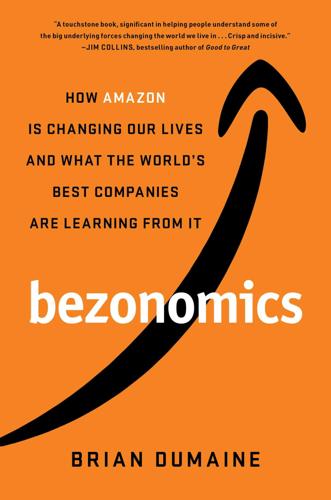
Bezonomics: How Amazon Is Changing Our Lives and What the World's Best Companies Are Learning From It
by
Brian Dumaine
Published 11 May 2020
A former Time magazine journalist and White House press secretary for President Obama, Carney told the stunned politician that Amazon had decided to walk away from a deal to bring a second headquarters and 25,000 jobs to Long Island City, an up-and-coming Queens neighborhood that ran along the East River and offered spectacular views of the Manhattan skyline. The call was brief, and Carney told the mayor the decision was final. Soon after talking with Carney, de Blasio, who’d worked hard to woo the company, struck out at Amazon in a tweet: “You have to be tough to make it in New York City.” Four months earlier, de Blasio and New York governor Andrew Cuomo, both Democrats, had sealed a deal with Amazon worth some $3 billion in state and local incentives to attract the e-commerce giant to New York. Their offer beat out those of 278 other cities competing to get those attractive Amazon jobs. At the same time, Amazon also announced that, besides New York, it would create another headquarters in northern Virginia.

Hustle and Gig: Struggling and Surviving in the Sharing Economy
by
Alexandrea J. Ravenelle
Published 12 Mar 2019
A report in October 2014 from the New York attorney general found that 72 percent of Airbnb listings for entire units offered during the period from January 2010 through June 2014 ran afoul of this and other codes.15 Even advertising short-term rentals is illegal. In June 2016, the New York State Legislature passed a measure that forbids landlords and tenants from listing whole apartments for short-term rental on Airbnb and similar sites. The act was signed into law by Governor Andrew Cuomo in late 2016. Violations result in fines of up to seventy-five hundred dollars.16 As a result, many Airbnb hosts, otherwise law-abiding citizens, are in the unusual situation of actively and publicly working to market themselves in an illegal endeavor. Most hosts that I interviewed expressed concern that they would get caught, especially when they first started listing.
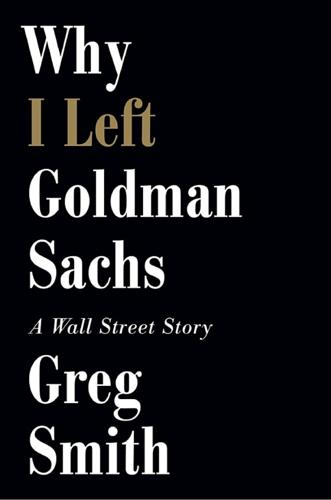
Why I Left Goldman Sachs: A Wall Street Story
by
Greg Smith
Published 21 Oct 2012
A significant proportion of the guys on our trading floor used to go down for a quick “wig adjustment” and a hot towel after the market closed. A lot of honchos and power players also used to go there, including Hank Paulson and Duncan Niederauer, former Goldman partner and then CEO of the NYSE. I was once having a haircut and then–New York Attorney General Andrew Cuomo pulled into the chair next to mine for a snip. As October turned to November, my barber, Mike, was tracking the move-in date closely. “Mr. Cohn was in here yesterday, and he said two weeks,” he’d tell me. Or, “Harvey Schwartz [cohead of Global Securities] said no later than Thanksgiving.” Much of the anticipation about the move centered on the new cafeteria.
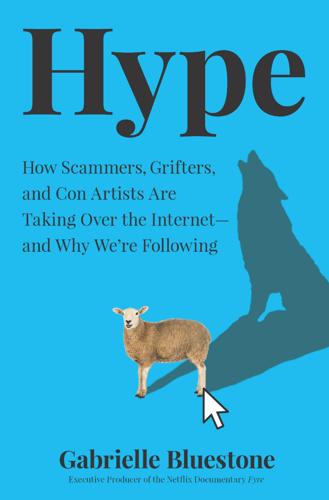
Hype: How Scammers, Grifters, and Con Artists Are Taking Over the Internet―and Why We're Following
by
Gabrielle Bluestone
Published 5 Apr 2021
“Standing up there and watching the sunset, looking out over this huge field of cars and people on their cars, it was absolutely beautiful,” Solomon initially told Bloomberg.239 “The group that put this together did an incredible job in a difficult environment. If we work together and are thoughtful, we can do things that feel more normal and allow us to live with this virus safely.” But authorities disagreed. “I am appalled,” New York governor Andrew Cuomo said in a tweet after the event, linking to a video posted by someone with the handle @firenzemike that showed the large crowds of people, many of whom were unmasked and ignoring social distancing guidelines.240 “The Department of Health will conduct an investigation,” Cuomo wrote. “We have no tolerance for the illegal & reckless endangerment of public health.”

Essential: How the Pandemic Transformed the Long Fight for Worker Justice
by
Jamie K. McCallum
Published 15 Nov 2022
So bans on social gatherings, such as holiday and birthday parties, were among the most effective ways to limit coronavirus transmission.20 Yet, as the epidemiologist Justin Feldman notes, whites demonstrated they were the most likely to attend social gatherings, but they were among the least likely to contract the coronavirus.21 Boisterous invocations to social distancing bled easily into Facebook filters and Twitter hashtags like #staythefuckhome, messages that were amplified by dishonest political elites. In a November 2020 press conference, then governor of New York Andrew Cuomo placed the blame for a coronavirus surge on individual failings.22 “If you’re socially distant, and you wore a mask, and you were smart, none of this would be a problem. It’s all self-imposed,” he said, building toward his Exhibit A: “If you didn’t eat the cheesecake, you wouldn’t have a weight problem.”
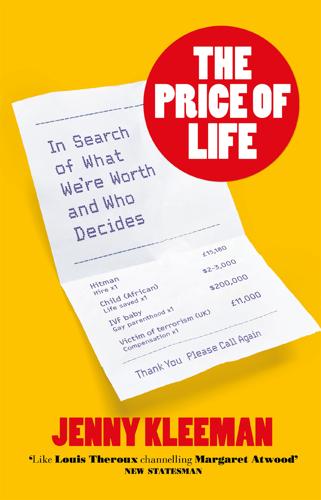
The Price of Life: In Search of What We're Worth and Who Decides
by
Jenny Kleeman
Published 13 Mar 2024
This is just the direct physical harm that can be measured in the immediate aftermath of pandemic restrictions; the psychological and developmental damage may take years to emerge. Finally: the price we paid to save lives with lockdown. Politicians around the world recognized that the decision to impose lockdowns was a cost–benefit decision. On 5 May 2020, New York Governor Andrew Cuomo was under pressure to relax restrictions. ‘The faster we reopen, the lower the economic cost, but the higher the human cost because the more lives lost. That, my friends, is the decision we are really making,’ he said in a televised address. ‘The question comes back to how much is a human life worth.
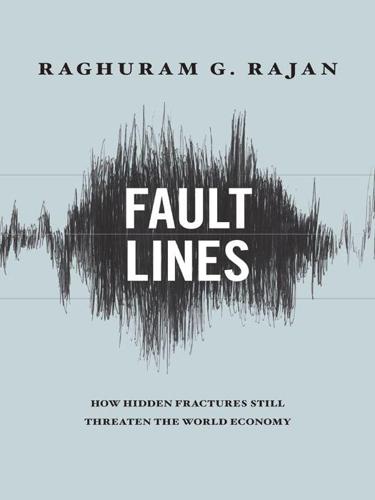
Fault Lines: How Hidden Fractures Still Threaten the World Economy
by
Raghuram Rajan
Published 24 May 2010
Trimbath, and Glenn Yago, The Savings and Loan Crisis: Lessons from a Regulatory Failure (Los Angeles: Milken Institute, 2004). 29 Bethany McLean, “Fannie Mae’s Last Stand,” Vanity Fair, February 2009. 30 Steven Holmes, “Fannie Mae Eases Credit to Aid Mortgage Lending,” New York Times, September 30, 1999. 31 Wayne Barrett, “Andrew Cuomo and Fannie and Freddie: How the Youngest Housing and Urban Development Secretary in History Gave Birth to the Mortgage Crisis,” Village Voice, August 5, 2008. 32 National Home Ownership Strategy (Washington, DC: Department of Housing and Urban Development, 1995), chapter 4. I thank Professor Joseph Mason of Louisiana State University for bringing my attention to this document and for first highlighting these issues. 33 See Lawrence McDonald and Patrick Robinson, A Colossal Failure of Common Sense: The Inside Story of the Collapse of Lehman Brothers (New York: Crown Business, 2009). 34 Neil Bhutta, “Giving Credit Where Credit Is Due?
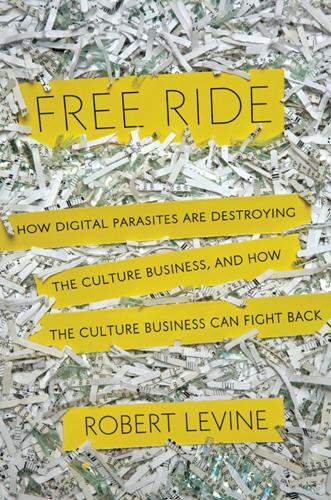
Free Ride
by
Robert Levine
Published 25 Oct 2011
If the deal is completed, it would not call for enforcement as strict as the Digital Economy Act does in the U.K., according to several executives familiar with the progress of the negotiations in early 2011: Internet access could not be limited before the sixth notice, users could ask for an independent review, and penalties would probably involve a cut in speed rather than outright disconnection. In summer 2008, Andrew Cuomo, then New York State attorney general, pressured Verizon, Sprint, and Time Warner Cable to block access to message boards and Web sites they hosted that contained child pornography. Universal Music executives subsequently contacted Cuomo to point out that similar material was also being traded on the file-sharing service LimeWire.

The Devil's Derivatives: The Untold Story of the Slick Traders and Hapless Regulators Who Almost Blew Up Wall Street . . . And Are Ready to Do It Again
by
Nicholas Dunbar
Published 11 Jul 2011
Dinallo could call the bluff of monoline default swap counterparties threatening to use collateral triggers, because under New York law he was the designated administrator of insolvent insurance companies, which gave him the power to determine who got paid and when. Other U.S. state insurance regulators had similar powers. By contrast, AIG’s holding company was not an insurer. 31. Of the $57 billion in debt that Sigma had outstanding in June 2007, all but $6 billion had been paid back by October 2008. 32. See the report by New York attorney general Andrew Cuomo, No Rhyme or Reason: The “Heads I Win, Tails You Lose” Bank Bonus Culture, 2009, http://www.ag.ny.gov/media_center/2009/july/pdfs/Bonus%20Report%20Final%207.30.09.pdf. Epilogue 1. For example, see the report Global Banks—Too Big to Fail?, published by J.P. Morgan Chase in February 2010, www.jpmorgan.com. 2.
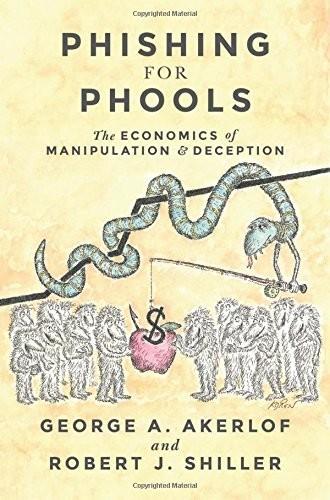
Phishing for Phools: The Economics of Manipulation and Deception
by
George A. Akerlof
,
Robert J. Shiller
and
Stanley B Resor Professor Of Economics Robert J Shiller
Published 21 Sep 2015
As long as a significant part of the bond-buying public was willing to swallow the myth whole, the investment bankers had an incentive to produce those rotten avocados, and to extract from the agencies the high ratings that would be the cover-up. Unfortunately, that is what happened. In 2008 then–New York State Attorney General Andrew Cuomo (who is now the governor) investigated the ratings agencies and imposed on them forty-two-month agreements to publish due diligence and evaluation criteria for residential mortgage-backed security ratings. To discourage the “ratings shopping” for good ratings, the agreements also required that agencies be paid for their services even if their ratings were not used.38 The Dodd-Frank Act of 2010 further made changes that increased the liability of credit ratings agencies for faulty ratings.39 The Cuomo agreements have now expired, and it is not clear whether the credit ratings problems will reappear once the market for residential mortgage-backed securities recovers.
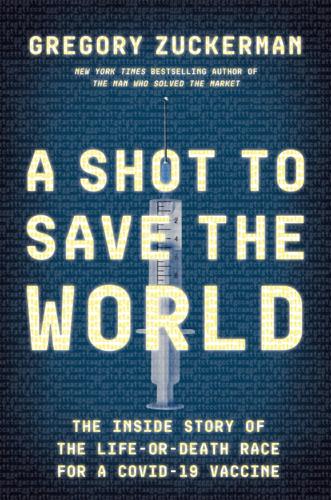
A Shot to Save the World: The Inside Story of the Life-Or-Death Race for a COVID-19 Vaccine
by
Gregory Zuckerman
Published 25 Oct 2021
As they landed in New York, Lewis called, calmly asking that they not react out loud to what she was about to say, in case someone overheard. “Daddy has corona,” she told them. Word quickly spread, despite the Garbuz family’s attempts to keep the illness private. Soon camera crews were in front of the family’s home and New York governor Andrew Cuomo had imposed a containment zone around their town, hoping to halt the virus’s spread. Before long, more than one hundred cases had emerged in their area, Westchester County. Cuomo described Garbuz as the region’s “Patient Zero,” even though others had similar symptoms at the time and a New York woman had earlier been diagnosed with the virus.

Bean Counters: The Triumph of the Accountants and How They Broke Capitalism
by
Richard Brooks
Published 23 Apr 2018
Under men like Dick ‘the Gorilla’ Fuld, Lehman was always a high-risk bank indulging in all the era’s financial vices. In Ernst & Young it found a firm that was prepared to look the other way. Five years after the events, the accountants coughed up $99m compensation for investors and paid $10m to settle accusations by New York Attorney General Andrew Cuomo that its auditing was ‘fraudulent and deceptive’, but without admitting guilt.42 This was peanuts for a firm with annual fees now reaching $32bn, more than a quarter of them from servicing the financial industry. On 14 September 2008, after being forced to report multi-billion-dollar write-downs and with funders abandoning ship, Lehman Brothers became the largest bankruptcy ever.
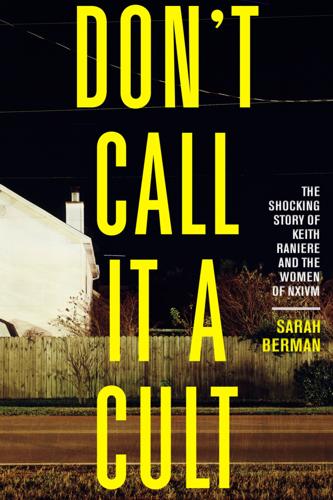
Don't Call It a Cult: The Shocking Story of Keith Raniere and the Women of NXIVM
by
Sarah Berman
Published 19 Apr 2021
“You can’t trade kids like playing cards, there’s a process you have to go through,” he told me. O’Hara reached out to the Saratoga County Department of Social Services and the New York State Office of Children and Family Services. “I got zero response, and I mean zero, nothing, nada,” he said. Undeterred, he wrote a letter to the New York attorney general, Andrew Cuomo. “I probably wrote three letters, which got increasingly aggressive and increasingly detailed.” Finally, the government got sick of hearing from him and called state police to have a look. State trooper Rodger Kirsopp was brought in to investigate what he called the “golden child.” O’Hara gave Kirsopp all the information he had about NXIVM and the adoption story that Nancy Salzman and Barbara Jeske were spreading.
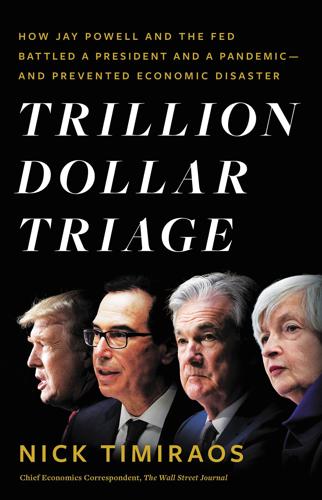
Trillion Dollar Triage: How Jay Powell and the Fed Battled a President and a Pandemic---And Prevented Economic Disaster
by
Nick Timiraos
Published 1 Mar 2022
“This was a week when we weren’t just worried about financial markets. We were worried about the functioning and operating of government, about day-to-day society,” said Drossos. The mother of three had started stockpiling cases of water bottles when ordering groceries from the FreshDirect delivery service. When she read a headline that suggested Governor Andrew Cuomo was thinking about shutting down New York City, she told her husband she needed to make one last run to Zabar’s, the neighborhood’s iconic food store. Drossos made sure their car was full of gas, and she pulled out cash from the ATM. The Fed had never cut rates at two consecutive emergency meetings.

Fortunes of Change: The Rise of the Liberal Rich and the Remaking of America
by
David Callahan
Published 9 Aug 2010
When a gay politician runs for office, such as Sean Maloney in New York, who ran for state attorney general in 2006, he can count on generous support from Bohnett and other major gay donors. Maloney received more than $45,000 from Bohnett, $50,000 from Jon Stryker, and $35,000 from Tim Gill—big money for a little-known candidate running for a state office. (Maloney lost to Andrew Cuomo.) Bohnett gives to plenty of nongay politicians, too, but in a very strategic fashion. For years, he has been supporting local candidates and elected leaders who are fighting to reform the maze of laws that hurt gay families on issues such as employment, housing, health care, and adoption. From the start, he saw all of this giving as laying the foundation for a long-term national push to achieve marriage equality.
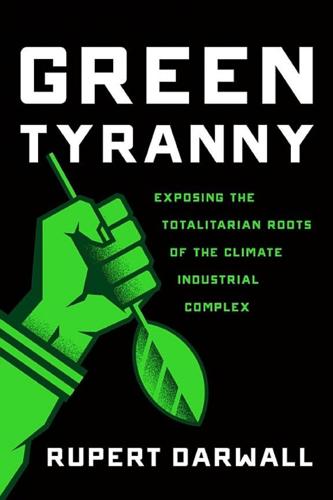
Green Tyranny: Exposing the Totalitarian Roots of the Climate Industrial Complex
by
Rupert Darwall
Published 2 Oct 2017
“Nothing short of a total ban can save us from this unfolding tragedy!” Gomer told the Common Cause banquet. We believe that New York must become the first state to ban fracking taking a leadership role that the rest of the country can then rally behind.17 After months of procrastinating, in December 2014, Governor Andrew Cuomo folded and announced a total ban on fracking in the state. A N.Y. Department of Health study hadn’t found any threats to public health but said there were risks that remained unanswered, perfectly illustrating the regressive nature of the precautionary principle. Instead, Cuomo backed plans for three new Las Vegas–style casinos.
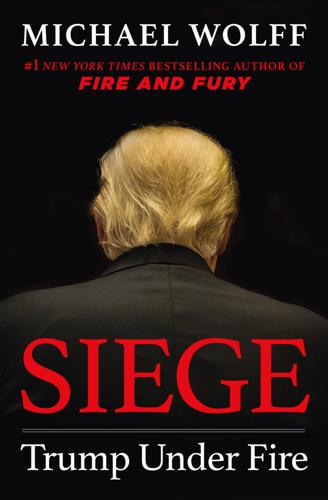
Siege: Trump Under Fire
by
Michael Wolff
Published 3 Jun 2019
On October 18, nine days after she announced her resignation and less than three weeks before the midterms, Haley headlined the Al Smith Dinner in New York City. “It’s amazing how Nikki Haley has exited this administration with such dignity,” said the master of ceremonies in his introduction of her to an audience that included New York governor Andrew Cuomo, Mayor Bill de Blasio, former mayor Michael Bloomberg, Senator Chuck Schumer, former secretary of state Henry Kissinger, and the Wall Street financier Stephen Schwarzman. This annual dinner is a showcase for political talent: on display for all to see is your deftness, acuity, charm, and cunning, plus the great admiration the donor class has for you.

Catch and Kill: Lies, Spies, and a Conspiracy to Protect Predators
by
Ronan Farrow
Published 14 Oct 2019
Between 1999 and that summer in 2017, he and his company had given to at least thirteen New York politicians or their PACs. He’d covered his bases, mostly with Democrats but also occasionally with Republicans like Pataki. He’d been generous with Senator Kirsten Gillibrand, and Attorney General Eric Schneiderman, and Governor Andrew Cuomo. For Weinstein and Pataki, as had been the case with Hillary Clinton, campaign contributions had helped foster friendship. The former governor was often photographed at the movie mogul’s events. Weinstein helped boost the career of Pataki’s daughter, Allison, an historical novelist. A year before Pataki’s call, Weinstein hosted a book party for her.
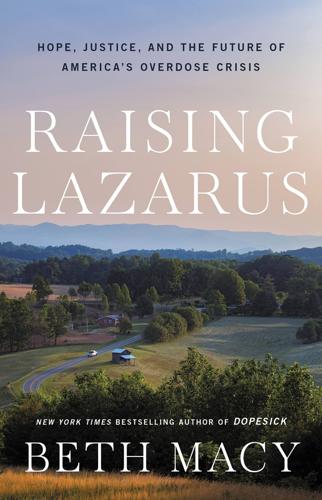
Raising Lazarus: Hope, Justice, and the Future of America’s Overdose Crisis
by
Beth Macy
Published 15 Aug 2022
Recapping events over pizza inside Goldin’s bohemian Clinton Hill apartment, the group held heated strategy sessions and hilarious debates. They grilled me about the bankruptcy. They begged me to speed along the Hulu show, over which I had very little control. They described their August 2019 trespassing arrest outside Governor Andrew Cuomo’s New York City office, after they blocked his doors for refusing to grant the opening of a safe-injection pilot site in the city. When they asked me for treatment advocacy advice, I suggested they make Goldin the poster girl for low-barrier bupe. (They looked into it, briefly, but largely kept their lens trained on the Sacklers.)

Blockchain Revolution: How the Technology Behind Bitcoin Is Changing Money, Business, and the World
by
Don Tapscott
and
Alex Tapscott
Published 9 May 2016
To Washington insiders, Lawsky was known for his early morning selfies on his daily jogs around the city. But to the titans of Wall Street, he was a gutsy, ambitious (not to mention overzealous) scrapper who would routinely take the fight to any bank he thought was misbehaving and seek his just deserts. Appointed by friend and longtime political ally Governor Andrew Cuomo, Lawsky was the first ever to hold the office of top watchdog of the state’s chartered banks. In 2012, only one year into the job, he made headlines when NYDFS reached a $340 million settlement with U.K. bank Standard Chartered PLC for its handling of more than $250 million in transactions from Iran, prohibited at the time by U.S. and E.U. sanctions.

The Age of Cryptocurrency: How Bitcoin and Digital Money Are Challenging the Global Economic Order
by
Paul Vigna
and
Michael J. Casey
Published 27 Jan 2015
A petition quickly circulated: Letter and signatories available on Chamber of Digital Commerce Web site, http://www.digitalchamber.org/ny-bitlicense.html. Some suggested more drastic action and started lobbying: Open-Source Financial Developers Association, “Stop BitLicense from Harming Small Businesses and Tech Innovation in NY,” petition to Governor Andrew Cuomo via change.org, http://www.change.org/p/governor-andrew-m-cuomo-and-the-new-york-state-legislature-stop-bitlicense-from-harming-small-businesses-and-tech-innovation-in-ny. Most dramatically, Circle CEO Jeremy Allaire: Jeremy Allaire, “Thoughts on the New York BitLicense Proposal,” August 13, 2014, Circle Internet Financial blog, https://www.circle.com/2014/08/13/thoughts-new-york-bitlicense-proposal.

The Divide: American Injustice in the Age of the Wealth Gap
by
Matt Taibbi
Published 8 Apr 2014
“The confidence in the system is so fragile still,” he reportedly said. “… A disclosure of a fraud … could result in a run, just like Lehman.” A year or so later The New York Times’s star finance writer, Gretchen Morgenson, ran a piece suggesting that Geithner had in 2008 warned off then–New York attorney general Andrew Cuomo from pursuing “hard-charging” prosecutions. “[Geithner’s] worry,” according to Morgenson’s sources, “sprang from a desire to calm markets, a goal that could be complicated by a hard-charging attorney general.” But as the years passed and the markets settled, the notion that the economy was too fragile to handle a prosecution began to seem increasingly absurd.
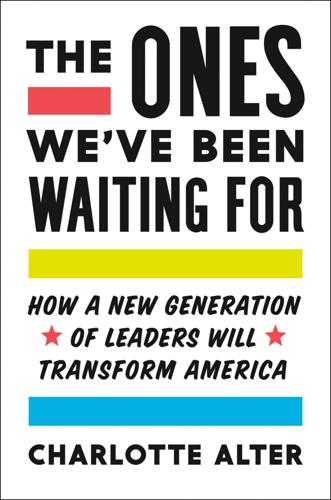
The Ones We've Been Waiting For: How a New Generation of Leaders Will Transform America
by
Charlotte Alter
Published 18 Feb 2020
She and her friend Melissa DeRosa negotiated a deal with the janitors to ensure that kids would help clean up the candy wrappers, Melissa said, then negotiated a deal with the vending machine company so that a certain portion of the profits would go to the school. In the end, they got it done, and Elise and Melissa would stay lifelong friends, even as Melissa went on to be a top aide to Democratic governor Andrew Cuomo. “Even in high school she was a young Republican,” one friend recalls. “I think that her father being this business owner probably had a lot to do with it.” Elise’s father had gotten his first job cutting door frames and worked his way up in the wood industry until he started Premium Plywood Products, which distributed plywood to companies around the Northeast.

Shutdown: How COVID Shook the World's Economy
by
Adam Tooze
Published 15 Nov 2021
In a school district where over a million children from low-income households rely on school for free meals, this was not an easy decision.18 On March 14, discussions began in California that would lead to a shutdown in San Francisco on March 16 and statewide closures on March 19. In Russia, the Ministry of Education was on the same timeline. It asked schools to begin preparing distance learning on March 14 and ordered school closures from March 18. Meanwhile, in New York, Mayor de Blasio, who had been slow to accept the brutal logic of the pandemic, was now urging Andrew Cuomo, the governor of New York State, to act.19 It would not be until March 20 that he instructed New Yorkers to stay at home. France began with closures of schools on March 12 and of bars and restaurants on March 14, and a full lockdown was declared on March 16.20 That evening in a televised address watched by a record 35 million French citizens, President Macron called for a “general mobilization.”
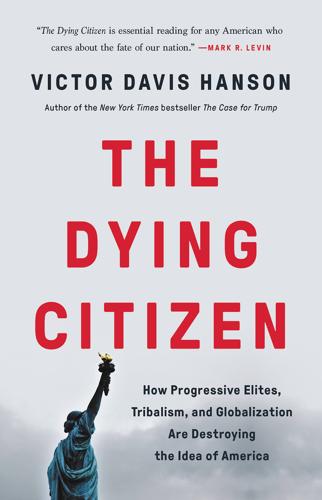
The Dying Citizen: How Progressive Elites, Tribalism, and Globalization Are Destroying the Idea of America
by
Victor Davis Hanson
Published 15 Nov 2021
And their advice about quarantining and mask wearing, the nature of viral transmission, the level at which herd immunity kicked in, and the likely appearance of a vaccine were sometimes contradictory or subject to abrupt reassessment. As a result, elected officials inevitably misled citizens. Medical experts, the president himself, House Speaker Nancy Pelosi, Senate Minority Leader Chuck Schumer, New York governor Andrew Cuomo, and expert statisticians at first variously downplayed the virus. But soon the opposite of exaggeration followed. Headlines now blared that the WHO or CDC claimed that out of every one hundred infected, two, three, or more patients would die from the disease. British epidemiologists warned that perhaps over two million Americans could die from the virus.
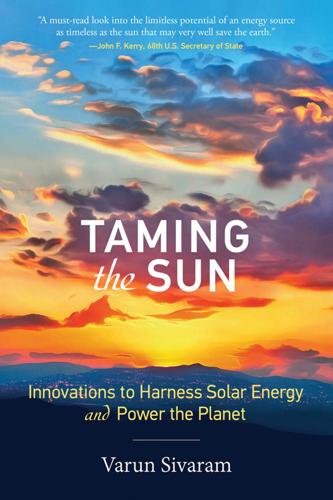
Taming the Sun: Innovations to Harness Solar Energy and Power the Planet
by
Varun Sivaram
Published 2 Mar 2018
In 2003, for example, an Ohio power line touched an overgrown tree branch, causing a cascading failure that blacked out vast swaths of the eastern United States and Canada, affecting 50 million people. Added to the mundane risks posed by vegetation are the malevolent threats of foreign adversaries who wish the United States harm and see the grid as a prime target.30 In the aftermath of Superstorm Sandy, New York governor Andrew Cuomo tasked the state’s energy agencies to develop a comprehensive plan to prepare for future disasters. From that mandate evolved “Reforming the Energy Vision (REV),” the brainchild of Governor Cuomo’s energy czar, Richard Kauffman. REV sought to build resilience into New York’s power grid from the ground up.

Fulfillment: Winning and Losing in One-Click America
by
Alec MacGillis
Published 16 Mar 2021
One day, the company was negotiating with the critics over the treatment of the 5,000 workers at its mammoth Staten Island warehouse—there was talk of allowing them to organize freely in exchange for approval of the subsidies for the new headquarters. This was a bridge too far for Amazon. A day later, Jay Carney, the journalist turned influencer-in-chief, called up Mayor Bill de Blasio and Governor Andrew Cuomo and told them the company was pulling out. Not entirely—there would still be several thousand white-collar Amazonians in the city, clustered mostly at Hudson Yards, the giant new development on the West Side of Manhattan. But there would be no HQ2 extravaganza. A group funded by Robert Mercer, the hedge-fund billionaire, paid for a billboard in Times Square blaming the loss on Ocasio-Cortez: THANKS FOR NOTHING, AOC!
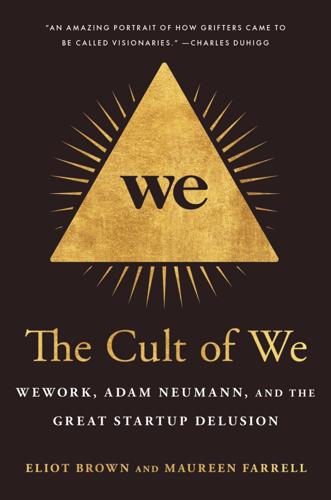
The Cult of We: WeWork, Adam Neumann, and the Great Startup Delusion
by
Eliot Brown
and
Maureen Farrell
Published 19 Jul 2021
The CFO was in the middle of trying to prepare the company for an IPO, though he did tell the couple he made some calls on the matter. He didn’t make much progress, so others within the organization were called upon. Eventually, the request landed in the lap of Maria Comella, a well-regarded political operative who was a top public affairs and policy executive at WeWork. She had been the chief of staff to Governor Andrew Cuomo of New York and a top aide to Republicans, including Governor Chris Christie of New Jersey. Through the spring, she spent a great deal of time turning to the phone companies and others in an effort to get them to move the antenna—all while on the clock for WeWork. While WeWork staff worked on their home in New York, the Neumanns brought some comforts of WeWork New York with them to the Bay Area.
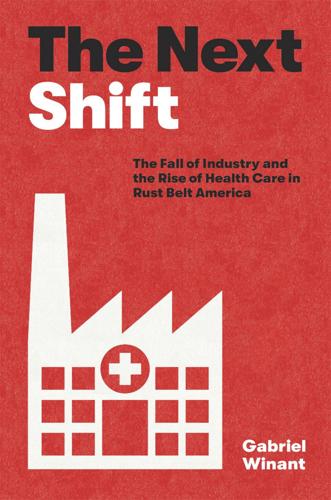
The Next Shift: The Fall of Industry and the Rise of Health Care in Rust Belt America
by
Gabriel Winant
Published 23 Mar 2021
City of Pittsburgh Wage Review Committee, “Report on the Impact of Raising Wages,” pp. 53, 104, 133; Payton, interview. 13. Ryan Deto, “UPMC Workers to Participate In One-Day Strike on Oct. 4,” Pittsburgh City Paper, September 24, 2018; US Department of Labor, Bureau of Labor Statistics, “Major Work Stoppages in 2018,” February 8, 2019. 14. “ ‘Fire through Dry Grass’: Andrew Cuomo Saw COVID-19’s Threat to Nursing Homes. Then He Risked Adding to It,” ProPublica, June 16, 2020; “Coronavirus Cases Rise Sharply in Prisons Even as They Plateau Nationwide,” NYT, June 16, 2020; “Black Americans Face Alarming Rates of Coronavirus Infection in Some States,” NYT, April 14, 2020; Centers for Disease Control COVID-19 Response Team, “Characteristics of Health Care Personnel with COVID-19—United States, February 12–April 9, 2020,” Morbidity and Mortality Weekly Report 69, no. 15 (April 17, 2020), 477–481. 15.

Doppelganger: A Trip Into the Mirror World
by
Naomi Klein
Published 11 Sep 2023
“I found out what it was that OWS actually wanted,” she wrote in The Guardian, explaining, “I began soliciting online ‘What is it you want?’ answers” from self-identified Occupy activists. Disregarding the movement’s commitment to radical, participatory democracy, Wolf then turned the results of her haphazard surveying into a short list of demands and took it upon herself to deliver it to New York governor Andrew Cuomo at a black-tie event organized by Huffington Post, where she and Cuomo were both guests. It got stranger. Failing to connect with Cuomo inside, Wolf left the event to spontaneously address Occupy Wall Street demonstrators on the sidewalk outside and, while informing the crowd what their demands were and telling them that they were demanding them wrong because “they had a first amendment right to use a megaphone,” managed to get herself arrested in a burgundy evening gown, a melee documented by a bank of cameras.
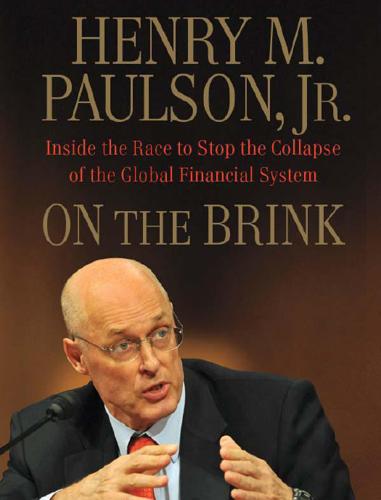
On the Brink: Inside the Race to Stop the Collapse of the Global Financial System
by
Henry M. Paulson
Published 15 Sep 2010
They expected that our actions—meant to prevent bank failures—could also avert the recession and slow the wave of foreclosures already under way. Obama and McCain both denounced Wall Street’s greed as they traveled around the country. And no single issue inflamed people more than revelations of excessive executive pay—and perks. New York State attorney general Andrew Cuomo launched a high-profile probe of AIG’s corporate expenses, including a notorious post-bailout retreat for insurance agents at a California spa that generated a lot of fiery press coverage. People were outraged that banks that had received government aid were still planning to dole out lavish pay packages.

The Best Business Writing 2013
by
Dean Starkman
Published 1 Jan 2013
That was when executives from a company called Clayton Holdings, which was retained by many of the big banks to do due diligence on the mortgages they were buying, told the Financial Crisis Inquiry Commission that Wall Street knew that almost one-third of the mortgages they were securitizing didn’t meet their own standards. Spitzer wrote a column for Slate calling the documents the “Rosetta stone” because he thought they provided such a clear road map for investigators. That’s not all. Schneiderman’s predecessor, Andrew Cuomo, actually entered into a cooperation agreement with Clayton back in 2008! Did it really take over four years to put together a complaint that doesn’t even name real people? As for the part about Bear pocketing money that should have gone to investors, that’s been well known since at least early 2011, when Teri Buhl did an in-depth piece for the Atlantic on a lawsuit that bond insurer Ambac filed against JPMorgan in 2008, which was unsealed in early 2011.

Why We Can't Afford the Rich
by
Andrew Sayer
Published 6 Nov 2014
106 Similarly, our old friend Goldman Sachs received $10 billion of state assistance and paid out $15.4 billion (£9.6 billion, or £269,000 per employee) in 2010.107 Citigroup and Merrill Lynch lost $54 billion, paid out nearly $9 billion in bonuses and then received state bailouts totalling $55 billion. The rewards for failure represented two fingers waved at the public. As New York State Attorney General Andrew Cuomo put it, ‘when the banks did well their employees were paid well. When the banks did poorly their employees were paid well. And when the banks did very poorly, they were bailed out by taxpayers and their employees were still paid well.’108 Only recently have any banks started to introduce mechanisms for clawing back bonuses in cases of individuals who can be linked to losses.109 But star employees have even been given ‘retention bonuses’ and ‘multiple year guaranteed bonuses’.

The Lost Bank: The Story of Washington Mutual-The Biggest Bank Failure in American History
by
Kirsten Grind
Published 11 Jun 2012
She fielded a call from a sobbing ninety-two-year-old woman. “I didn’t get a notice,” said the woman. “There must be some mistake.” Glaze explained patiently, “No, sweetie. There’s no mistake.” “You don’t understand,” the woman replied, sobbing. “I live on my dividends.” • • • In November 2007, Andrew Cuomo, New York’s attorney general, filed a lawsuit against eAppraiseIT, the company WaMu used to handle its appraisals.52 In the suit, Cuomo accused WaMu of pressuring appraisers to inflate home values, and alleged that eAppraiseIT and its parent, First American, had yielded to WaMu’s demands. Between 2006 and 2007, eAppraiseIT conducted 260,000 appraisals for WaMu, earning $50 million in fees.

Coders: The Making of a New Tribe and the Remaking of the World
by
Clive Thompson
Published 26 Mar 2019
move fast and break things: My description of Moses’s work here draws from: Robert A. Caro, The Power Broker: Robert Moses and the Fall of New York (New York: Knopf, 1974), 850–84; David W. Dunlap, “Why Robert Moses Keeps Rising from an Unquiet Grave,” New York Times, March 21, 2017, accessed August 18, 2018, https://www.nytimes.com/2017/03/21/nyregion/robert-moses-andrew-cuomo-and-the-saga-of-a-bronx-expressway.html; Sydney Sarachan, “The Legacy of Robert Moses,” PBS, January 17, 2013, accessed August 18, 2018, http://www.pbs.org/wnet/need-to-know/environment/the-legacy-of-robert-moses/16018/. there are over 250: There may be far more than 250; it’s hard to count, in part because companies and coders invent new special-purpose ones all the time.

The Color of Money: Black Banks and the Racial Wealth Gap
by
Mehrsa Baradaran
Published 14 Sep 2017
Nixon had tried—with minimal effort—to induce large white-owned firms to voluntarily contribute to black businesses as a civic duty. And that is how the firms themselves had viewed their involvement. Clinton’s program also relied on private businesses to pour money into the ghetto, but he did not appeal to philanthropic aims at all; he promised profits. Clinton’s HUD secretary, Andrew Cuomo, told reporters that it “is not about charity. It’s about investment.”62 Academics and progressive reformers agreed that ghetto poverty was just a result of misaligned market incentives and could only be addressed through private enterprise. Influential Harvard Professor Michael Porter wrote that instead of aid or social investments, the only way to build the economy of the ghetto was “through private, for-profit initiatives and investment based on economic self-interest and genuine advantage. . . .

The Billionaire's Apprentice: The Rise of the Indian-American Elite and the Fall of the Galleon Hedge Fund
by
Anita Raghavan
Published 4 Jun 2013
Naftalis—Gupta’s lead counsel; a former federal prosecutor turned A-list criminal defense attorney who has represented everyone from former Walt Disney CEO Michael Eisner to Wall Street legend Kenneth Langone David S. Frankel—longtime litigation partner of Naftalis, who represented New York State Liberal Party leader Raymond Harding in an inquiry by New York attorney general Andrew Cuomo Robin Wilcox Alan R. Friedman The Kumars Anil Kumar—McKinsey consultant who was Raj Rajaratnam’s classmate at Wharton and Gupta’s protégé at McKinsey Malvika Kumar—his wife Aman Kumar—his son His Lawyers Morvillo Abramowitz Grand Iason & Anello Robert G. Morvillo—Kumar’s lead counsel; he represented domestic goddess Martha Stewart Gregory Morvillo—his son, who after his father’s death would start his own firm and represent Level Global cofounder Anthony Chiasson The Rajaratnams Raj Rajaratnam—head of the Galleon Group Asha Pabla Rajaratnam—his wife Rengan Rajaratnam—former head of Sedna Capital and Raj’s youngest brother Ragakanthan Rajaratnam—Galleon portfolio manager and Raj’s middle brother His Lawyers Akin Gump Strauss Hauer & Feld John M.

The Aristocracy of Talent: How Meritocracy Made the Modern World
by
Adrian Wooldridge
Published 2 Jun 2021
Bush, Jeb Bush’s eldest son, is already climbing up the greasy poll as Commissioner of the Texas General Land Office and is a growing voice in the national Republican Party (the ‘P’ stands for Prescott, the name of his grandfather, a US senator). The Bushes and the Clintons are the tip of a vast iceberg of nepotistic political families: think of Andrew Cuomo, the governor of New York and son of Mario; Jerry Brown, the former governor of California and son of Pat, another governor of California; and sundry Kennedys, including Caroline Kennedy. Mitt Romney, the Republicans’ 2012 candidate, was the son of a governor of Michigan and sometime presidential candidate George Romney.

Boom: Mad Money, Mega Dealers, and the Rise of Contemporary Art
by
Michael Shnayerson
Published 20 May 2019
His first was a biography of writer Irwin Shaw (1989), followed by The Car That Could: The Inside Story of GM’s Revolutionary Electric Vehicle (1996), The Killers Within: The Deadly Rise of Drug-Resistant Bacteria (2002), and Coal River (2008), about mountaintop coal removal in Appalachia. With Harry Belafonte, he wrote the entertainer and activist’s autobiography (2011), and most recently published The Contender, an unauthorized biography of New York governor Andrew Cuomo (2015). He is married to Gayfryd Steinberg and divides his time between New York and Sag Harbor. BIBLIOGRAPHY The bibliography does not include any conversation, interviews, letters, periodicals, journals, online sources or other nonbook sources. That material is specifically referenced in individual chapter endnotes.

Generations: The Real Differences Between Gen Z, Millennials, Gen X, Boomers, and Silents—and What They Mean for America's Future
by
Jean M. Twenge
Published 25 Apr 2023
More recently, the #MeToo movement brought attention to sexual harassment and assault, with the arrest of perpetrators such as Harvey Weinstein (b. 1952) and the resignations of others such as Matt Lauer (b. 1957) and Charlie Rose (b. 1942). In many cases, the instigators were Silent or Boomer men who seemed surprised by how things have changed. “In my mind, I have never crossed the line with anyone. But I didn’t realize the extent to which the line has been redrawn,” Andrew Cuomo (b. 1957) said when he resigned as governor of New York in 2021 after numerous women came forward with sexual harassment allegations. “There are generational and cultural shifts that I just didn’t fully appreciate—and I should have.” There is also a generational divide for women, especially when sexual harassment involves speech instead of physical touching.
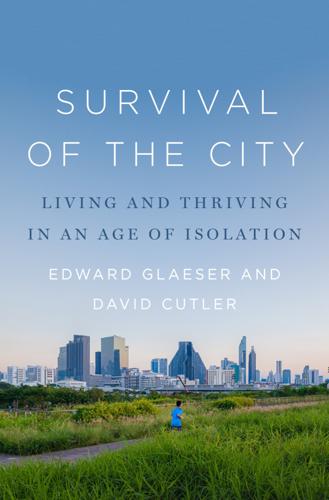
The Survival of the City: Human Flourishing in an Age of Isolation
by
Edward Glaeser
and
David Cutler
Published 14 Sep 2021
HistoryLink, November 19, 2015. www.historylink.org/File/11148. D. S. G. “Medical Care: Changes in the Political Terrain.” Science 135, no. 3498 (1962): 90–91. www.jstor.org/stable/1707551. Dunlap, David W. “Why Robert Moses Keeps Rising from an Unquiet Grave.” The New York Times, March 21, 2017. www.nytimes.com/2017/03/21/nyregion/robert-moses-andrew-cuomo-and-the-saga-of-a-bronx-expressway.html. Dunn, Bill. “J.R. Simplot.” Freedom from Religion Foundation. Accessed December 25, 2020. https://ffrf.org/news/day/dayitems/item/14774-j-r-simplot. Early Childhood Learning and Knowledge Center/Head Start. “Types of Grants.” December 3, 2018. https://eclkc.ohs.acf.hhs.gov/fiscal-management/article/types-grants.
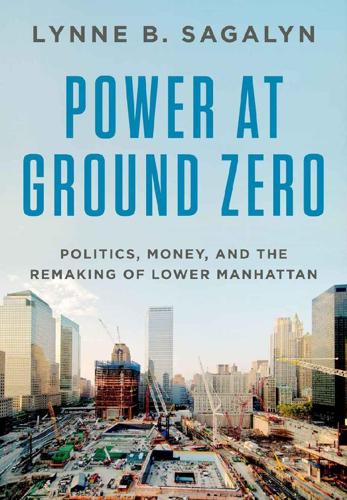
Power at Ground Zero: Politics, Money, and the Remaking of Lower Manhattan
by
Lynne B. Sagalyn
Published 8 Sep 2016
It rebuked the historically proud agency for being out of control, especially when it came to mismanagement of the $14.8-billion Trade Center project, and cast another blemish on its reputation. “The audit caused considerable pain in the organization,” Crain’s quoted a top insider as saying.72 A top-to-bottom shake-up, including governance reform, was not far off, and Governor Andrew Cuomo was reportedly interested in bringing the quasi-independent authority under control. Surely, exposure of deep fissures in the governance structure of the bi-state Port Authority was an unintended consequence of the institution’s quest to control and rebuild the site of its iconic home, making its future somewhat uncertain.
…
David Emil, president of the LMDC (April 2007−April 2015) and former owner of Windows on the World restaurant at the top of the North Tower, destroyed on 9/11. James P. “Jamie” Fox, PANYNJ deputy director (November 2004−July 2007) appointed by New Jersey governor James McGreevey. Patrick J. Foye, PANYNJ executive director (November 2011−), appointed by New York governor Andrew Cuomo. Alexander Garvin, Yale-educated urban planner, educator, and author; LMDC vice president (February 2002−May 2003) in charge of coordinating planning for the Trade Center site. Timothy J. Gilchrist, long-serving public-sector professional. At the state Department of Transportation, he was in charge of the rebuilding of West Street after 9/11.

Never Let a Serious Crisis Go to Waste: How Neoliberalism Survived the Financial Meltdown
by
Philip Mirowski
Published 24 Jun 2013
But the real agnotological breakthrough came when a respected journalist seemingly positioned outside of the Russian doll (indeed, hailing from within that brimstoned Mordor for the right, the New York Times) was somehow induced to write a book also casting Fannie and Freddie as the evil twins behind everything that went wrong in the crisis: Gretchen Morgenson and Josh Rosner’s Reckless Endangerment. This sparsely sourced and footnote-free book clearly depended heavily on Pinto for the few vague numbers it cited; it was much more expansive when it pursued searing indictments of political figures such as Barney Frank, Robert Zoellick, and Andrew Cuomo. A few obscure economists at the Fed came in for especially vituperative comment. At this juncture the NTC had hit a home run: Michael Bloomberg was caught repeating the meme in his hissy fits provoked by the Occupy Wall Street movement. Persistence and repetition and emoluments had paid off—the Fannie/Freddie “explanation” had become embedded in the blogosphere and the cultural landscape, spread far and wide by the Republican presidential candidates and beyond.
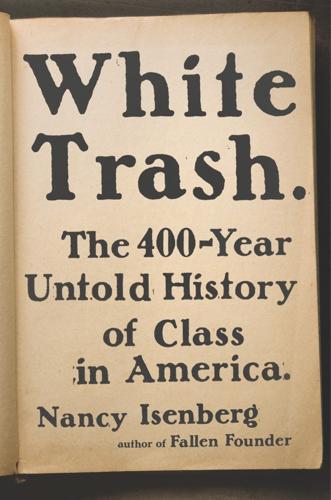
White Trash: The 400-Year Untold History of Class in America
by
Nancy Isenberg
Published 20 Jun 2016
To wit: would we know of Donald Trump, George W. Bush, Jesse Jackson Jr., or such Hollywood names as Charlie Sheen and Paris Hilton, except for the fact that these, and many others like them, had powerful, influential parents? Even some men of recognized competence in national politics are products of nepotism: Albert Gore Jr., Rand Paul, Andrew Cuomo, and numerous Kennedys. We give children of the famous a big head start, deferring to them as rightful heirs, a modern-day version of the Puritans’ children of the Elect. In Thomas Jefferson’s formulation, nature assigned classes. Nature demanded a natural aristocracy—what he termed an “accidental aristoi.”
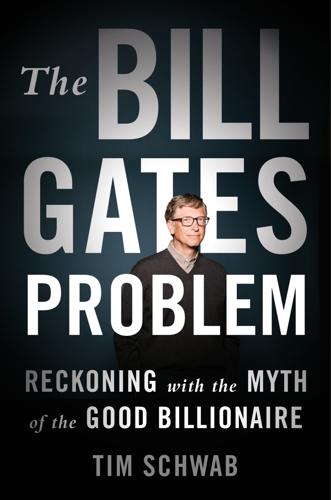
The Bill Gates Problem: Reckoning With the Myth of the Good Billionaire
by
Tim Schwab
Published 13 Nov 2023
In reality, Gates’s political influence comes the old-fashioned way: through money. Bill and Melinda French Gates have put well over ten million dollars of their personal wealth into campaign contributions and political contests, including supporting a wide range of candidates like Mike Pence, Barack Obama, Katie Porter, Marco Rubio, Cory Booker, Lindsey Graham, Andrew Cuomo, Mitch McConnell, Rob Portman, and Nancy Pelosi. Gates’s financial influence can also be seen in its charitable giving to politically connected organizations, including the nearly $10 billion the Gates Foundation has donated to organizations based in the nation’s capital—three thousand charitable grants, including donations to a never-ending stream of advocates who help put Gates’s agenda in front of Congress and other political tastemakers.

The Rough Guide to New York City
by
Rough Guides
Published 21 May 2018
The New York Court of Appeals initially ruled gay marriage illegal in 2006; two years later, Governor David Paterson issued a directive that required state agencies to recognize same-sex marriages officiated elsewhere as valid in New York. He followed that with legislation to legalize such marriage in the city, which the State Assembly passed but the Senate voted down in late 2009. Paterson’s successor, Andrew Cuomo, a strong supporter of the cause, was able to mount a successful drive for its passage in 2011 (and three-time mayor, Michael Bloomberg, was an outspoken proponent); helped by a few key Republican votes, the State Senate voiced its approval two days before the Pride Parade in June. The US Supreme Court’s June 2013 decision in favour of marriage equality was greeted with jubilation outside the Stonewall Inn and elsewhere.